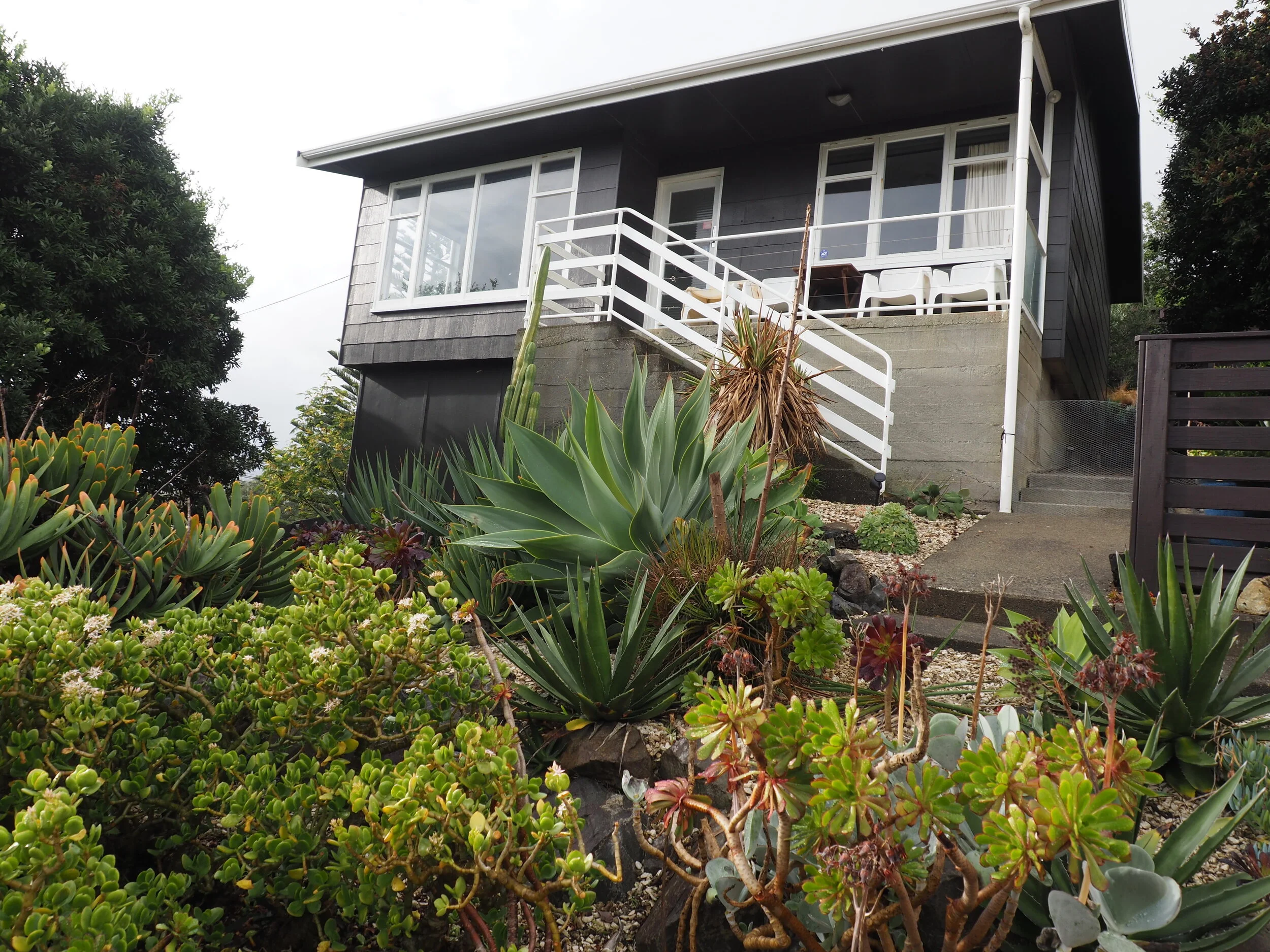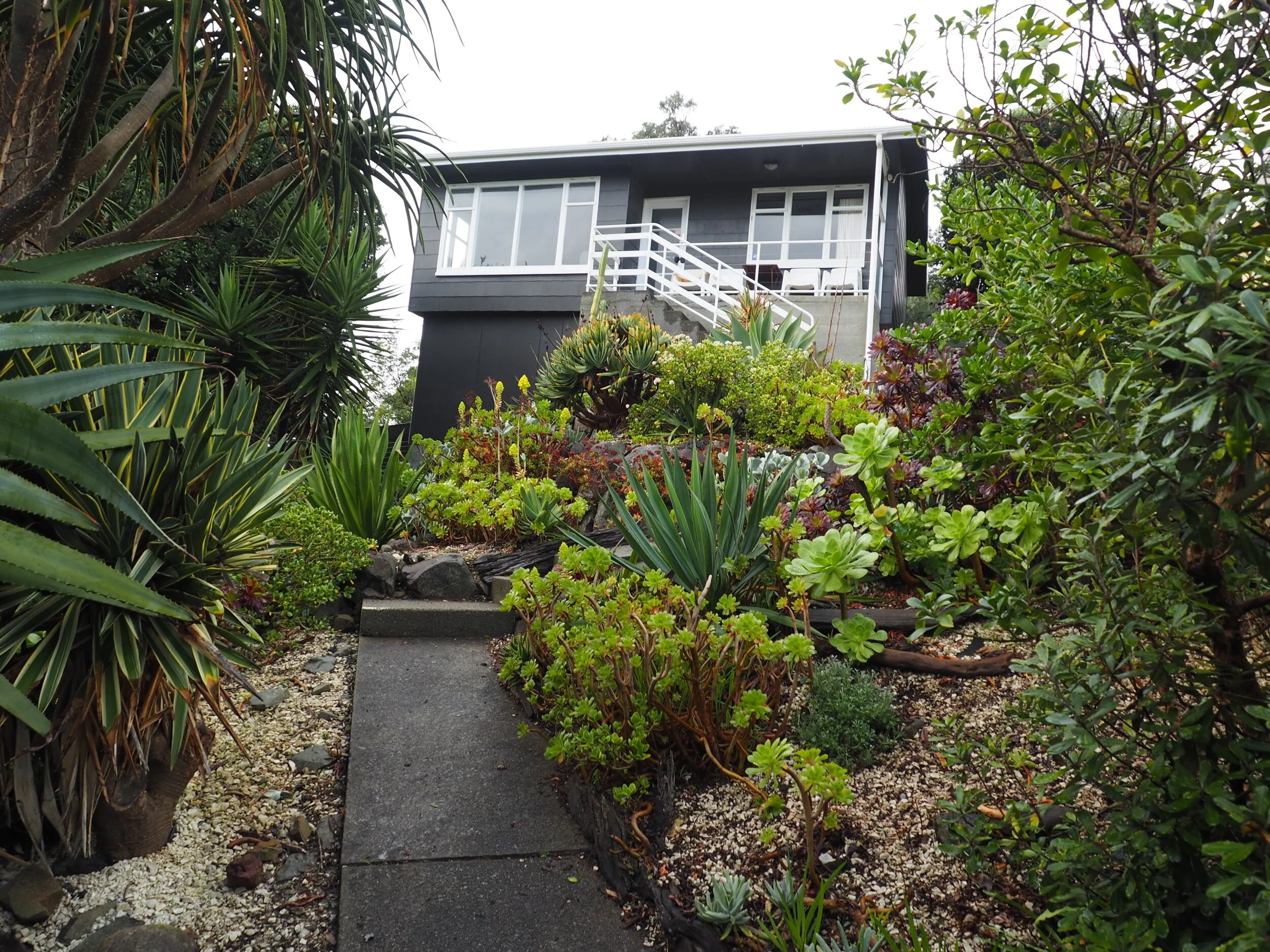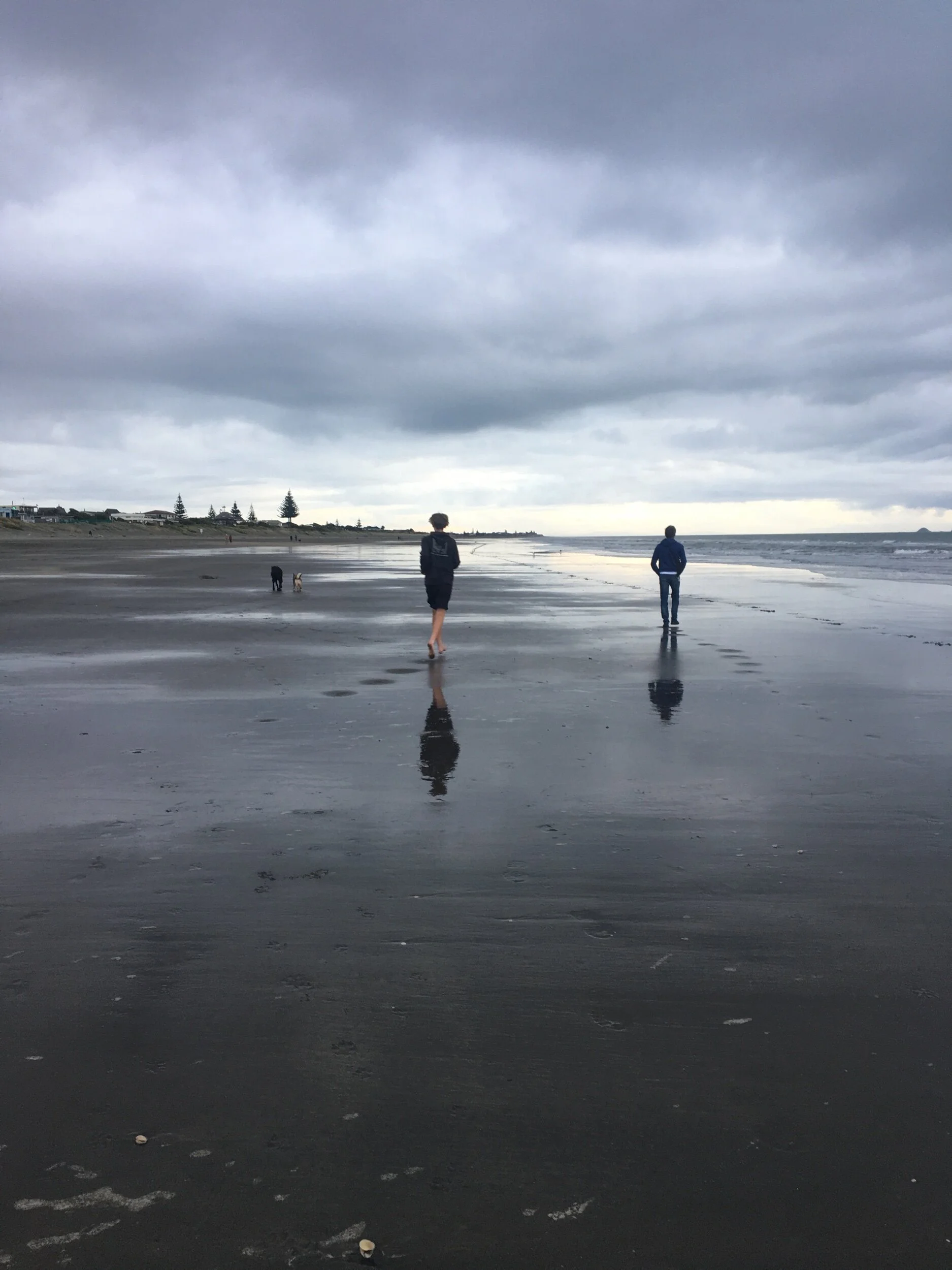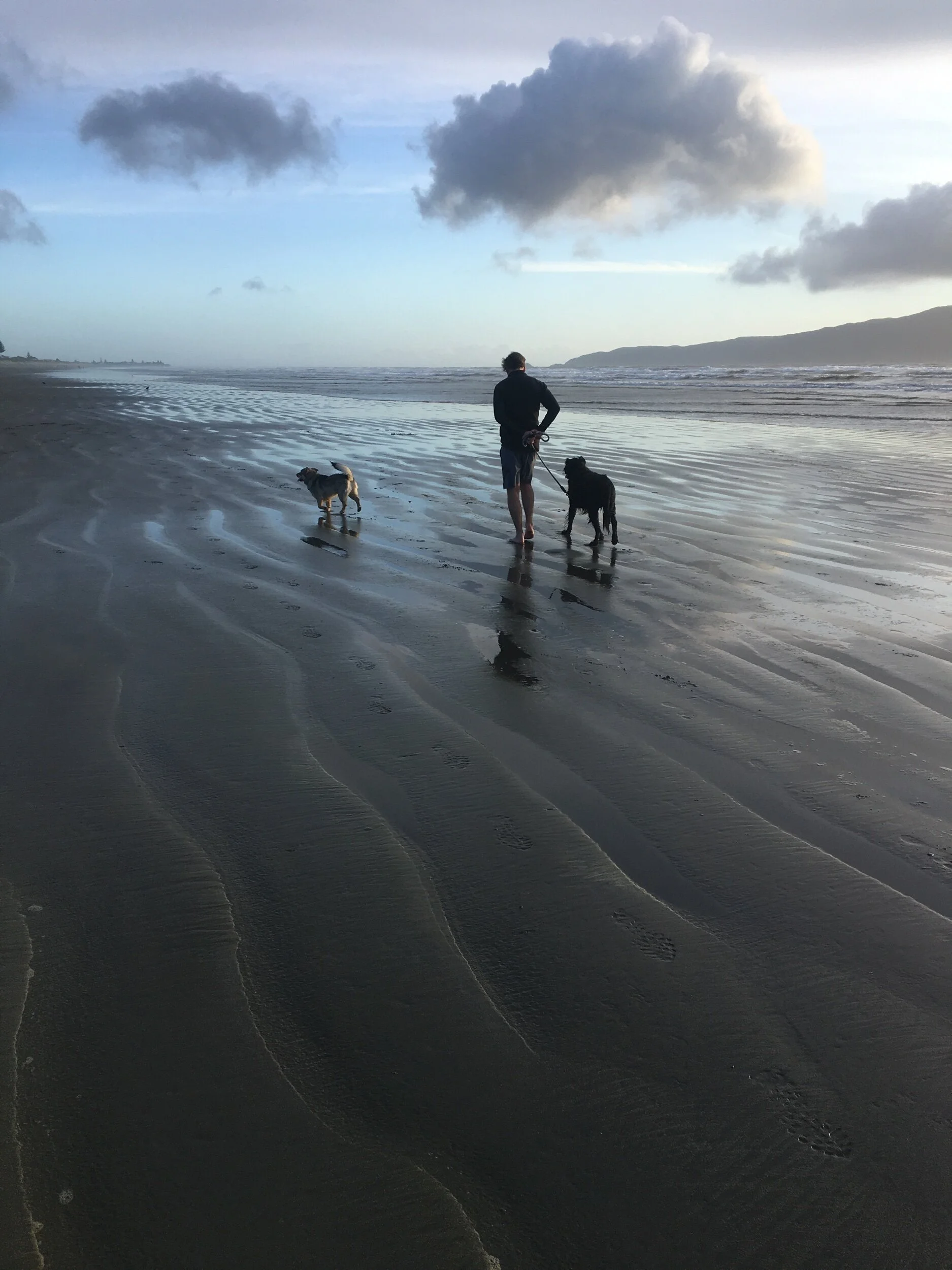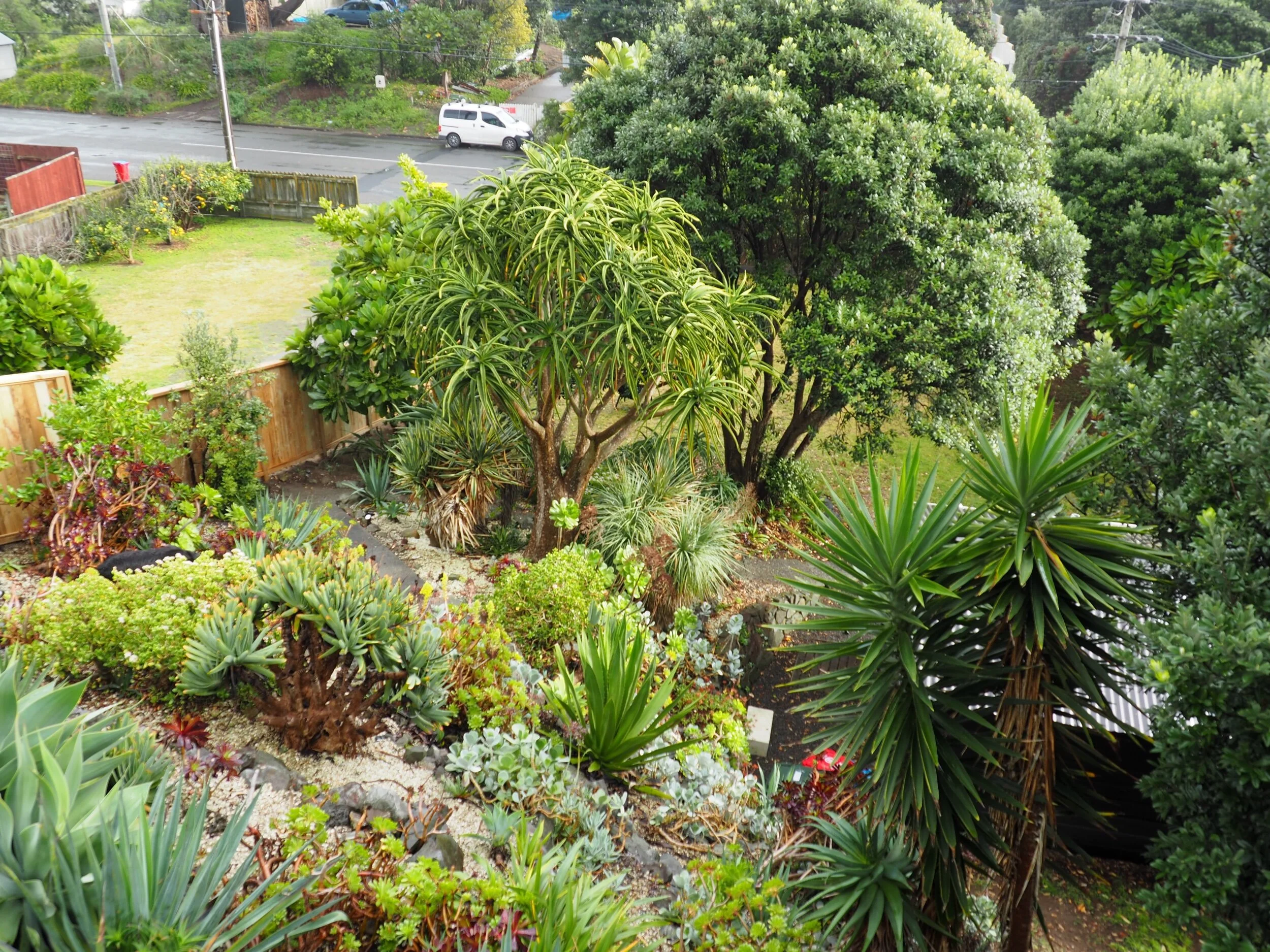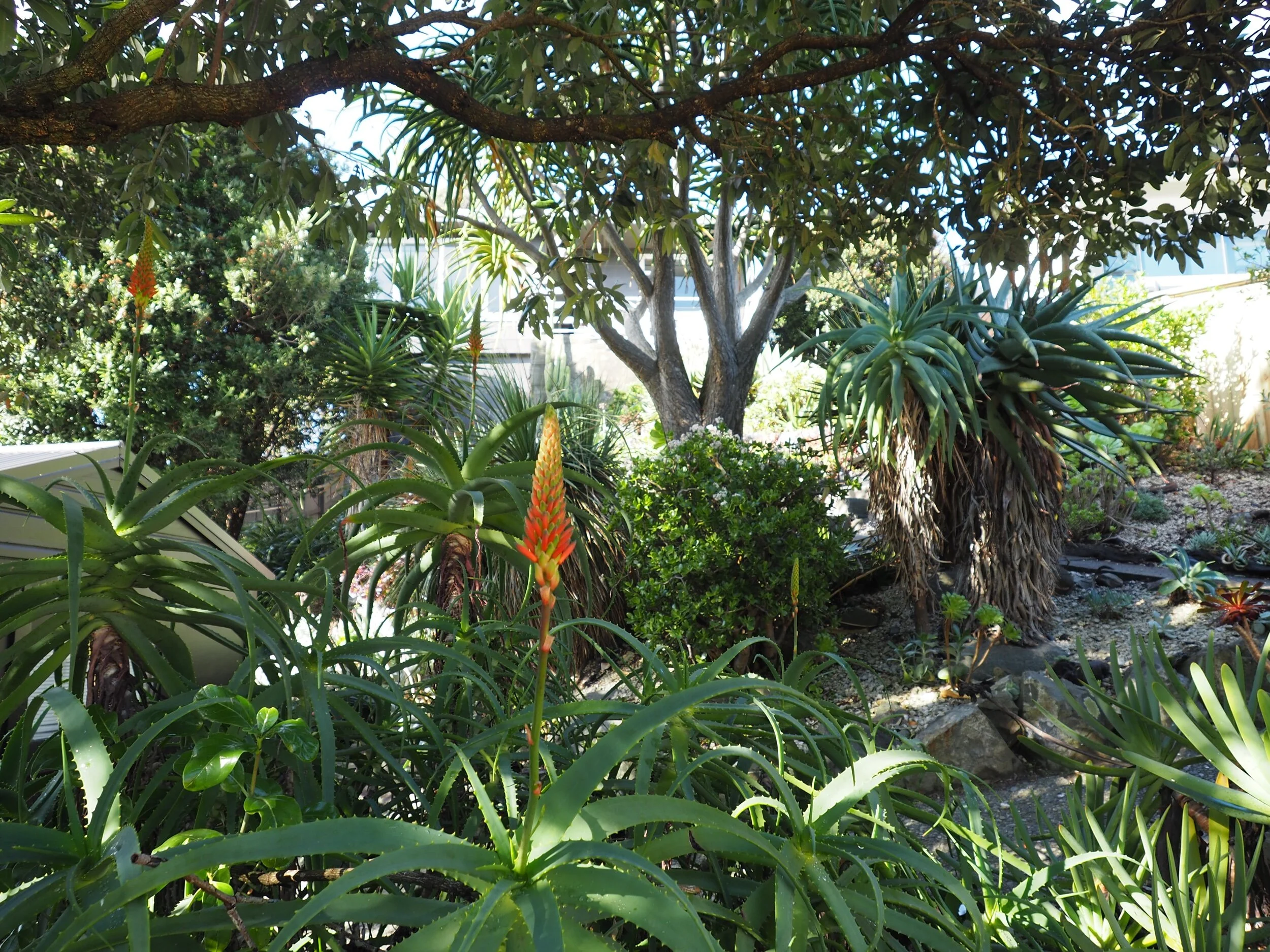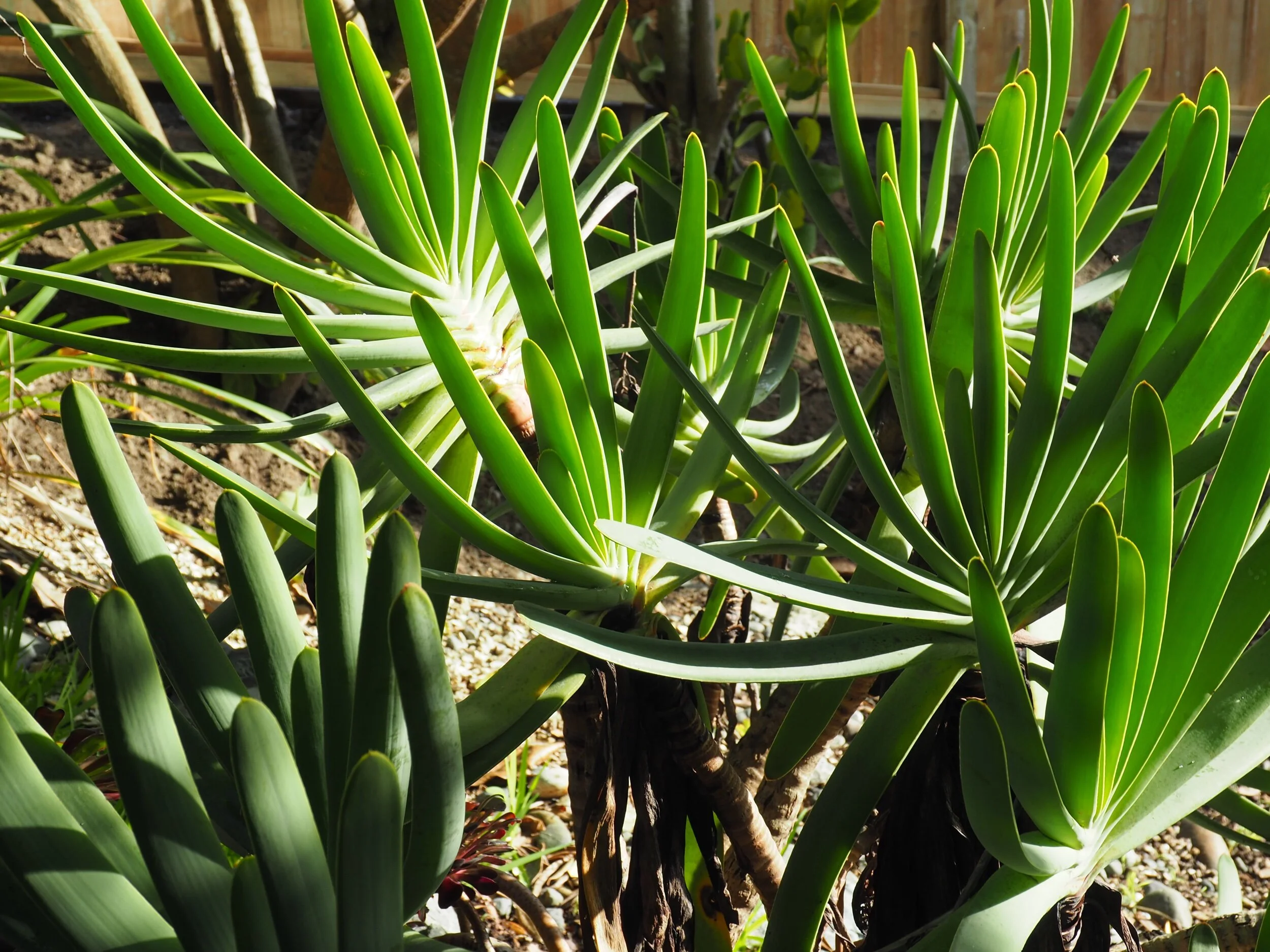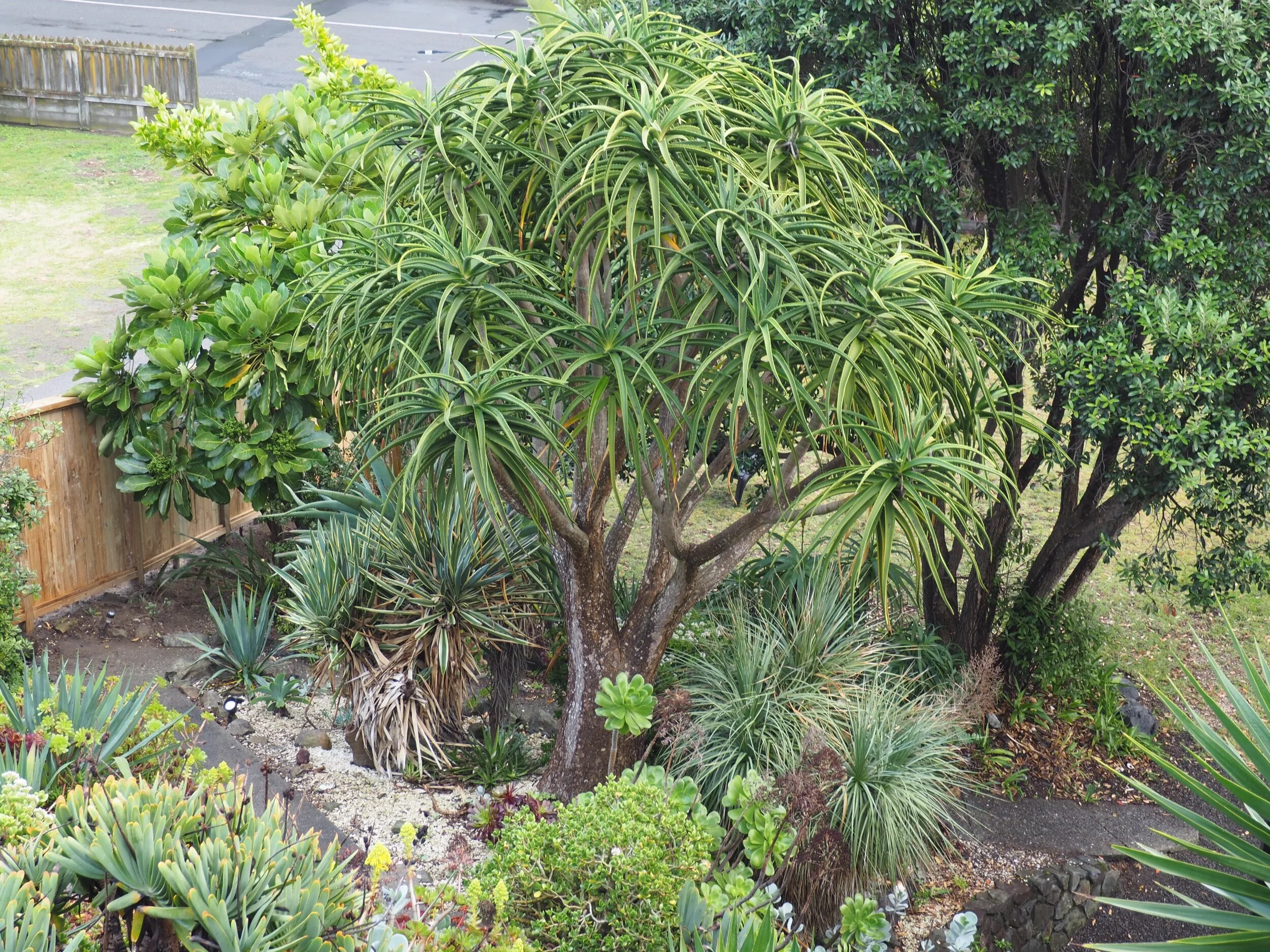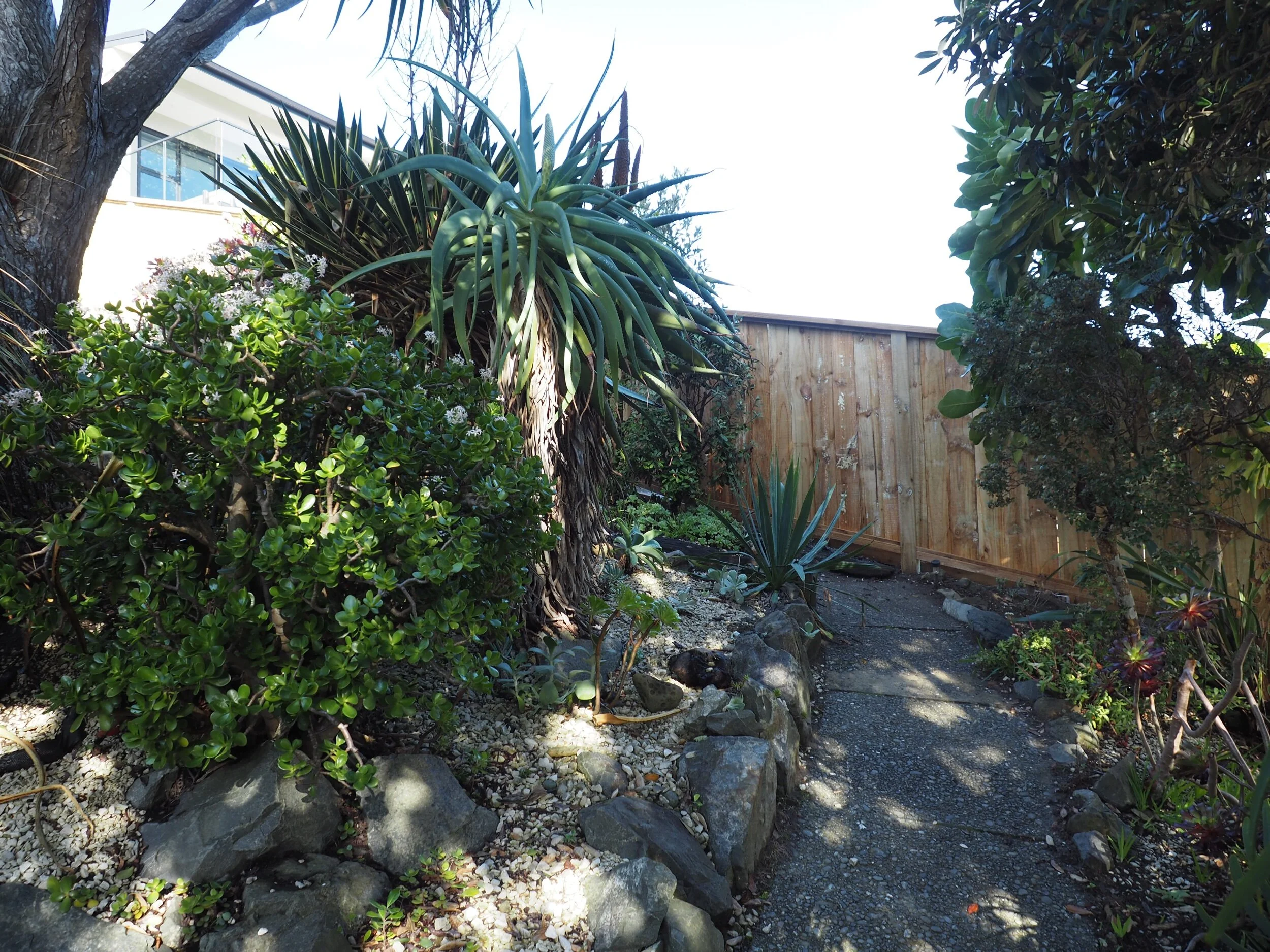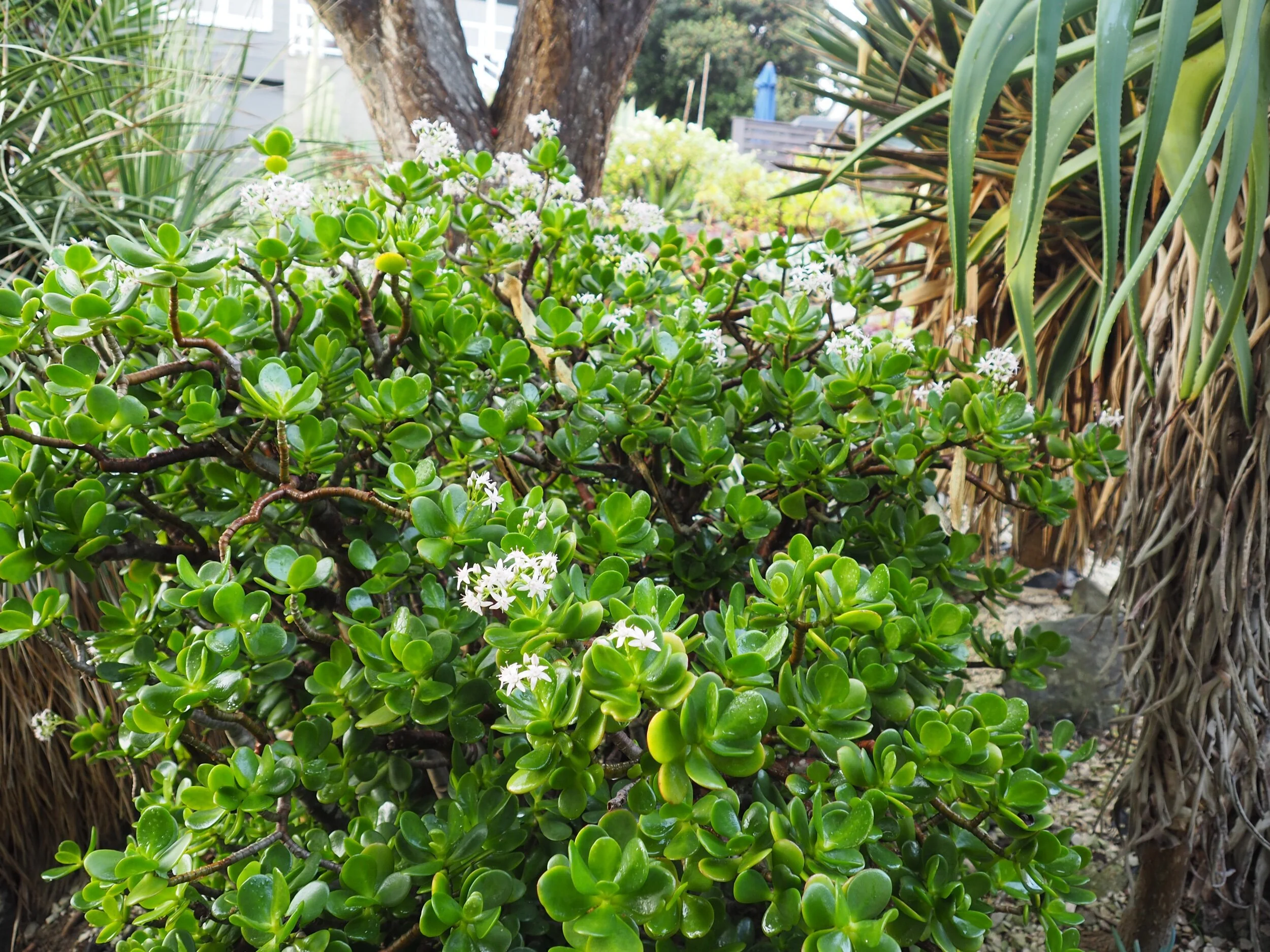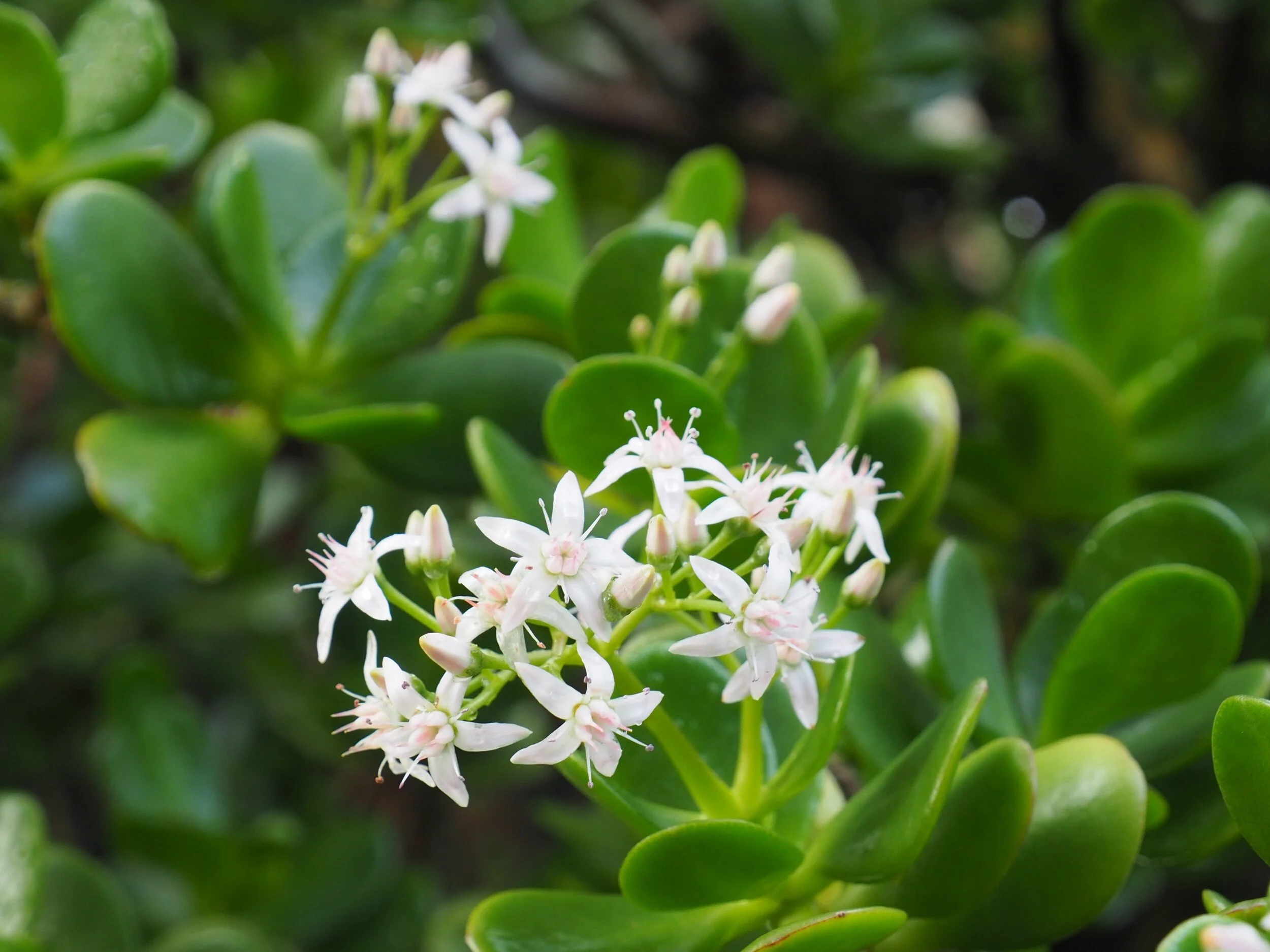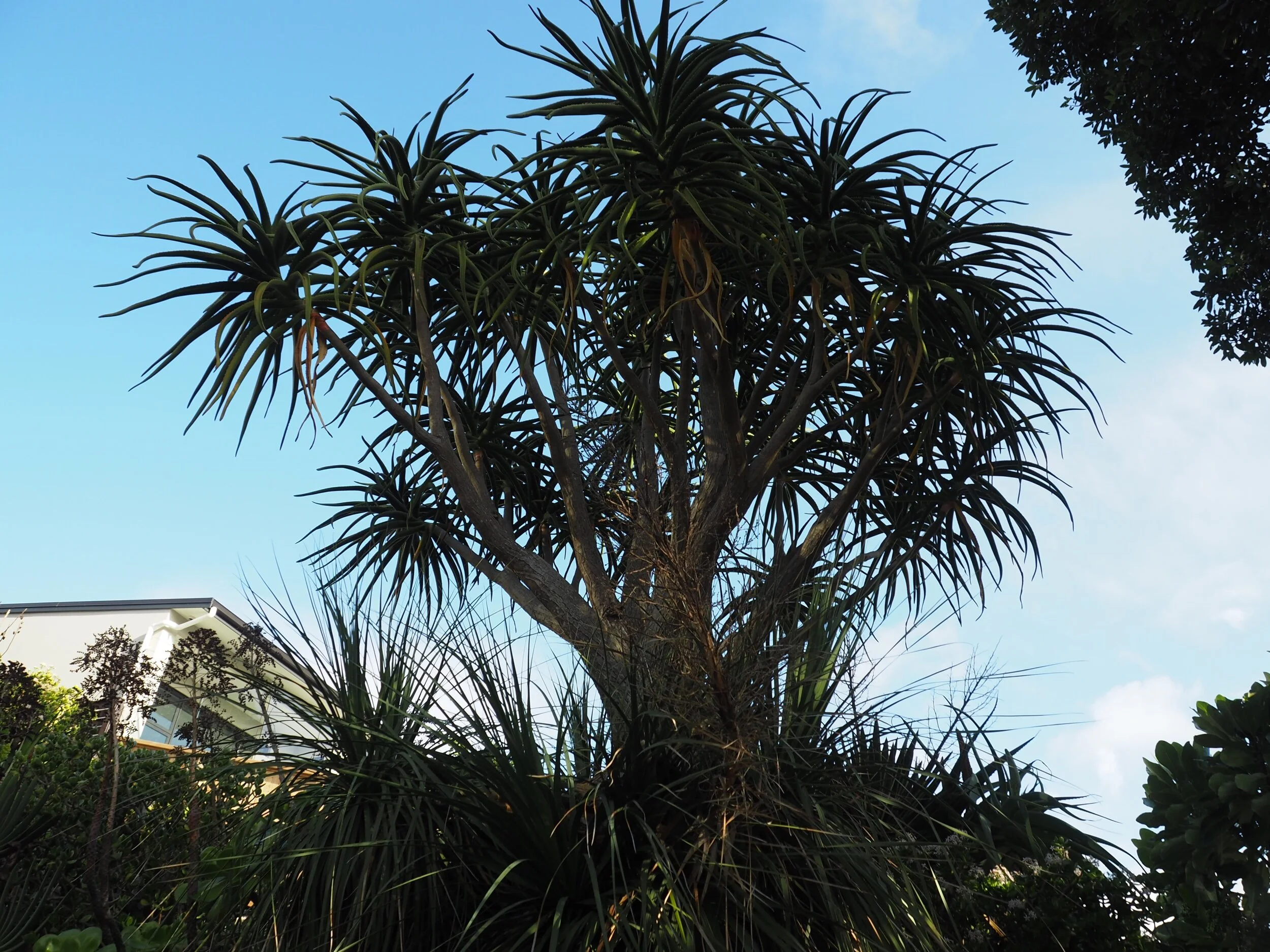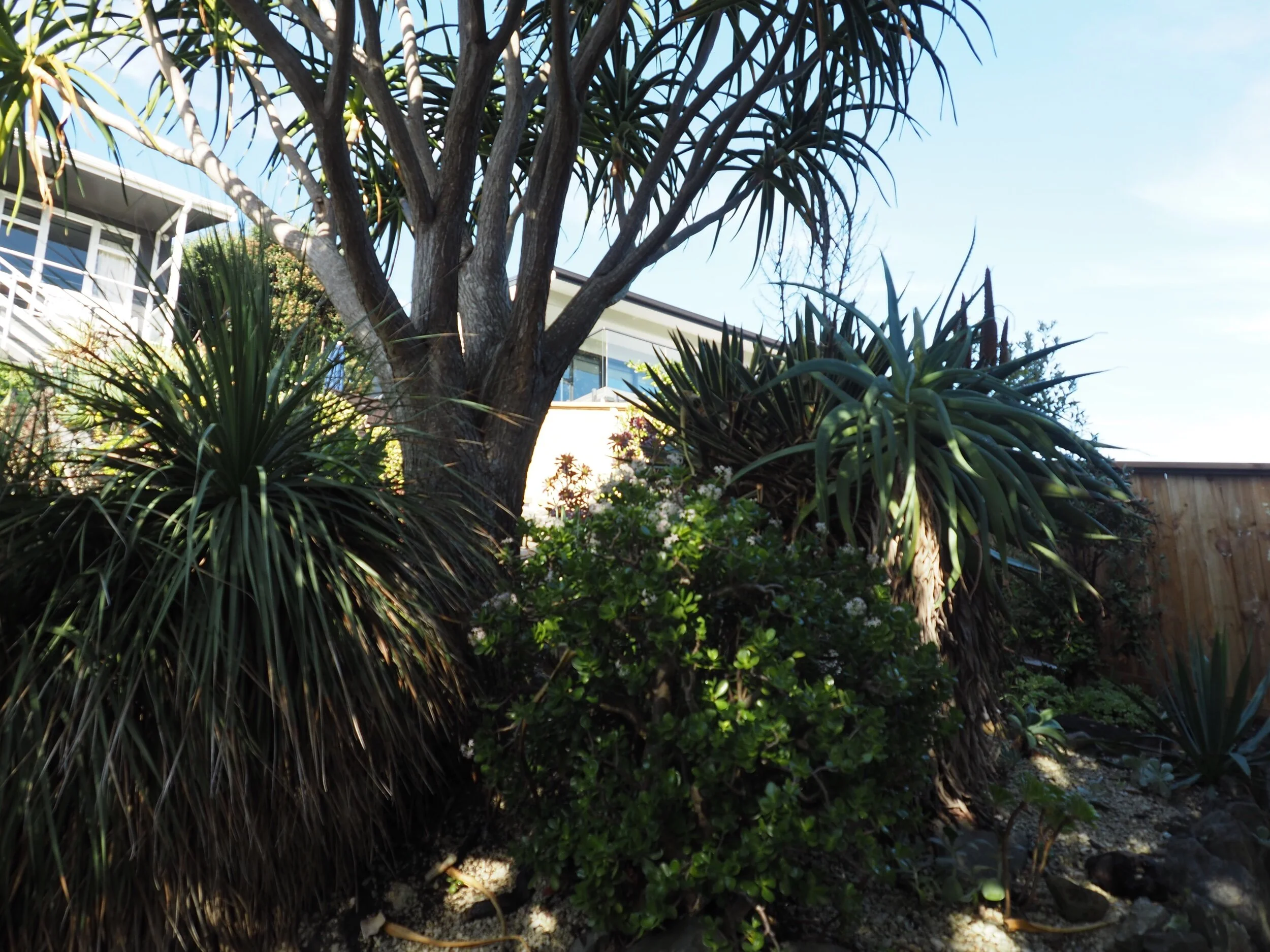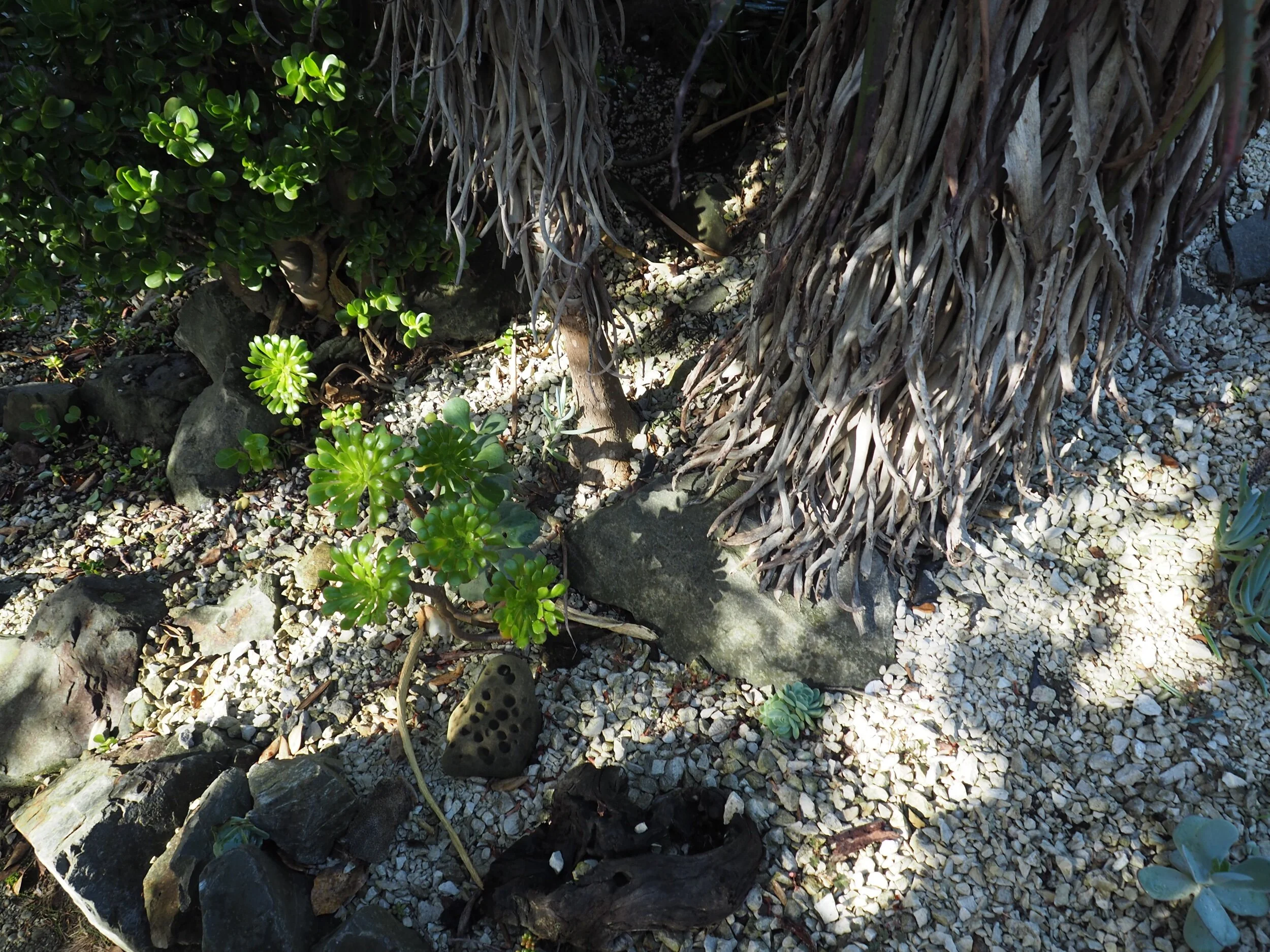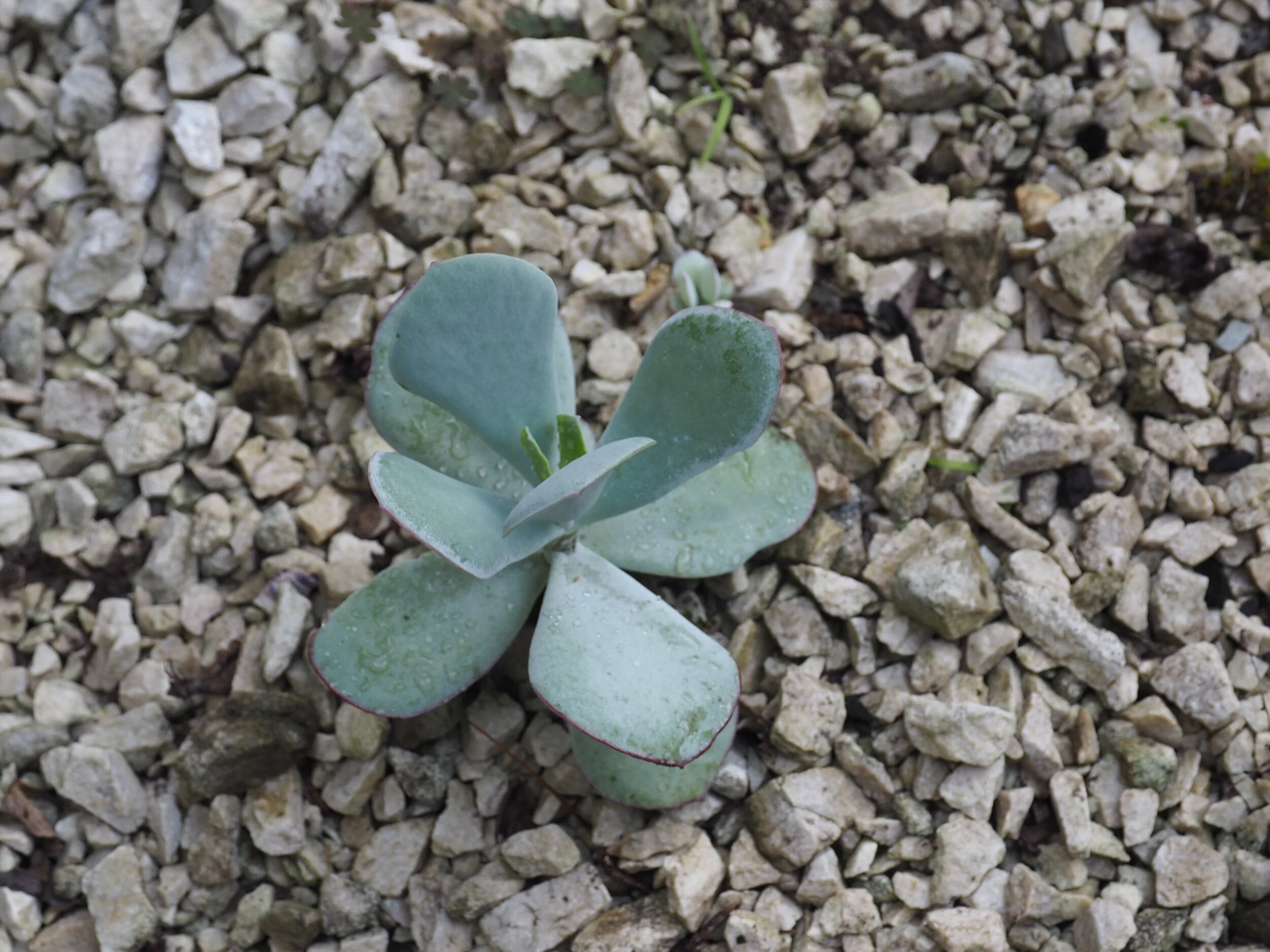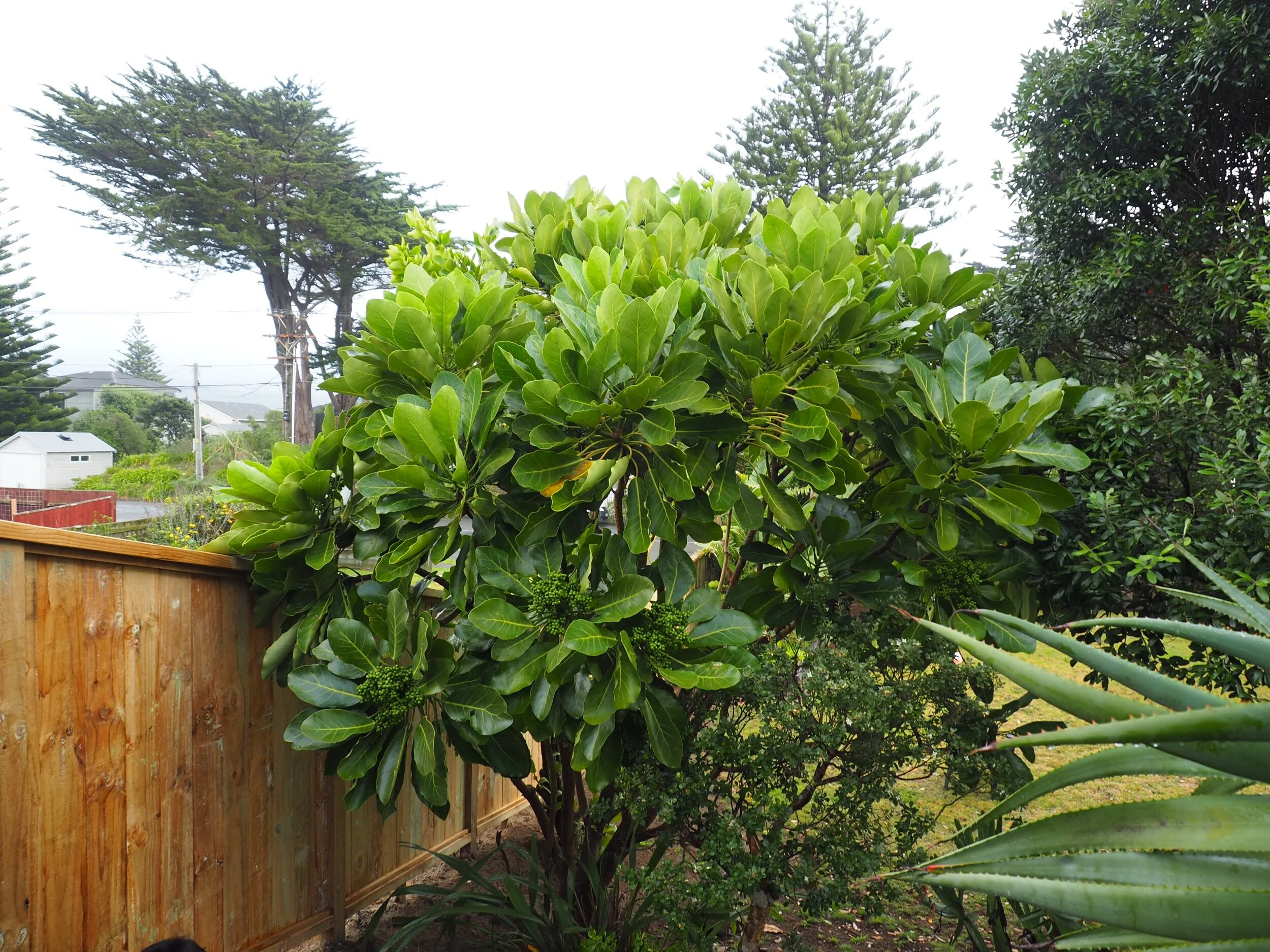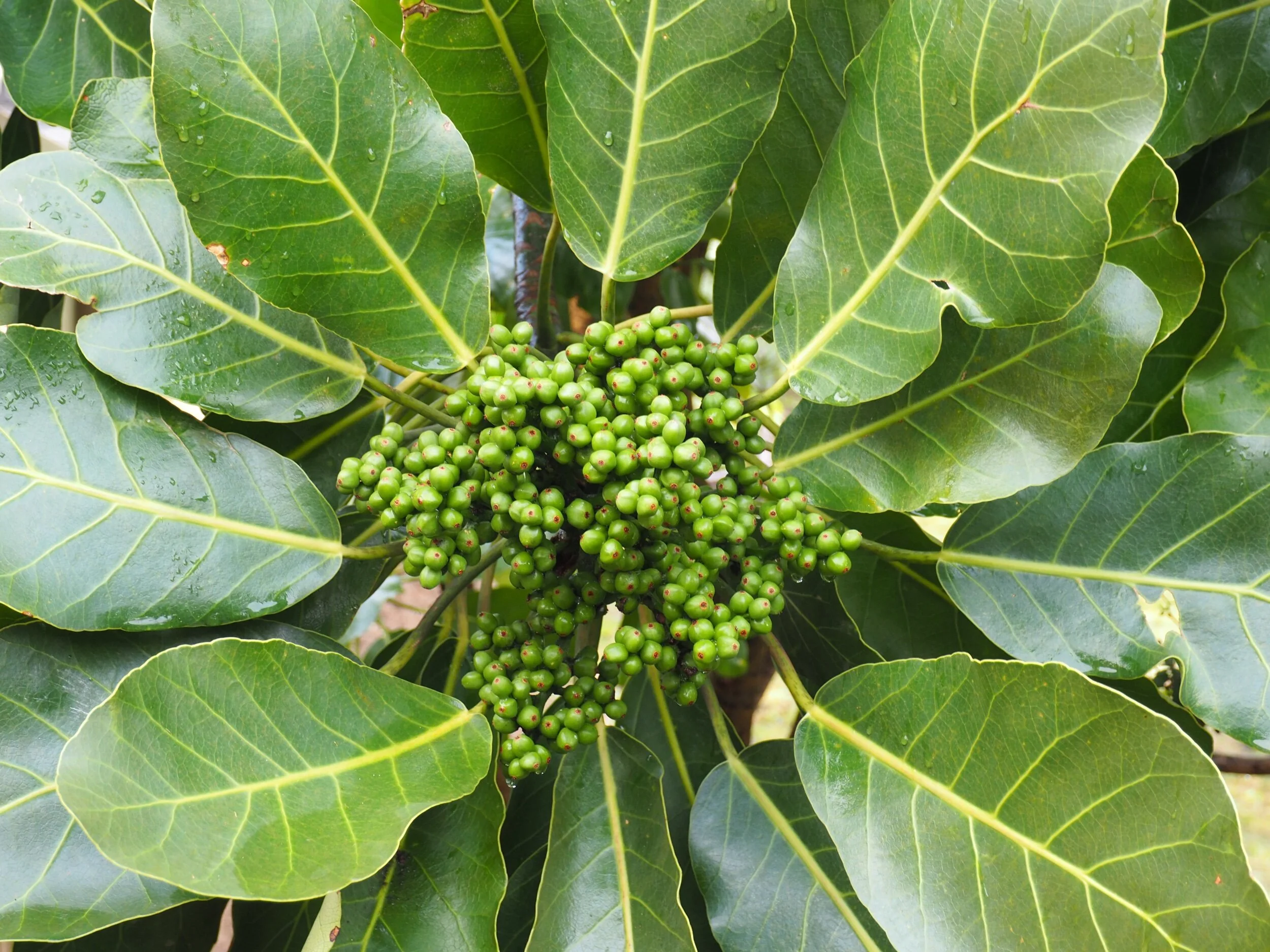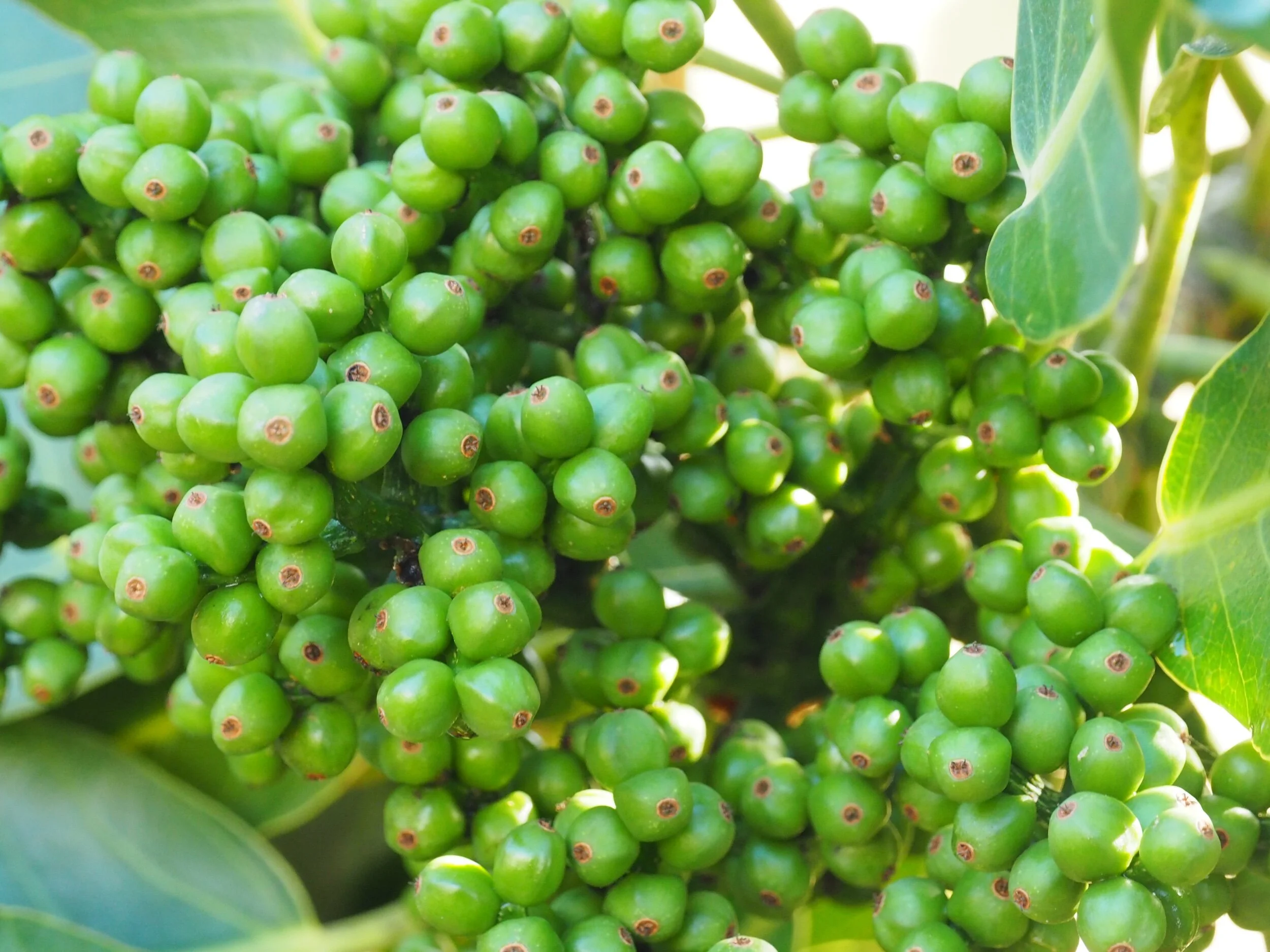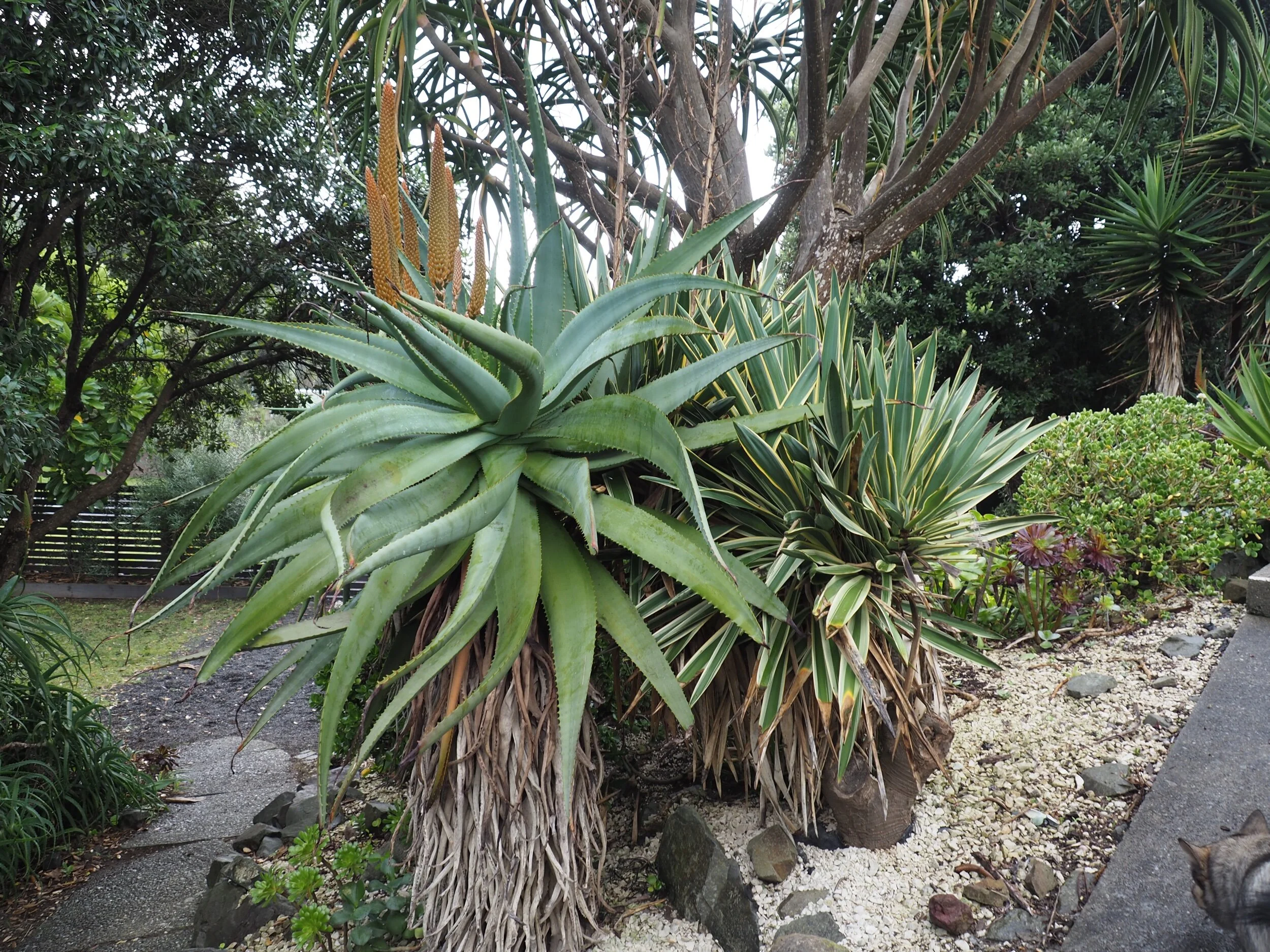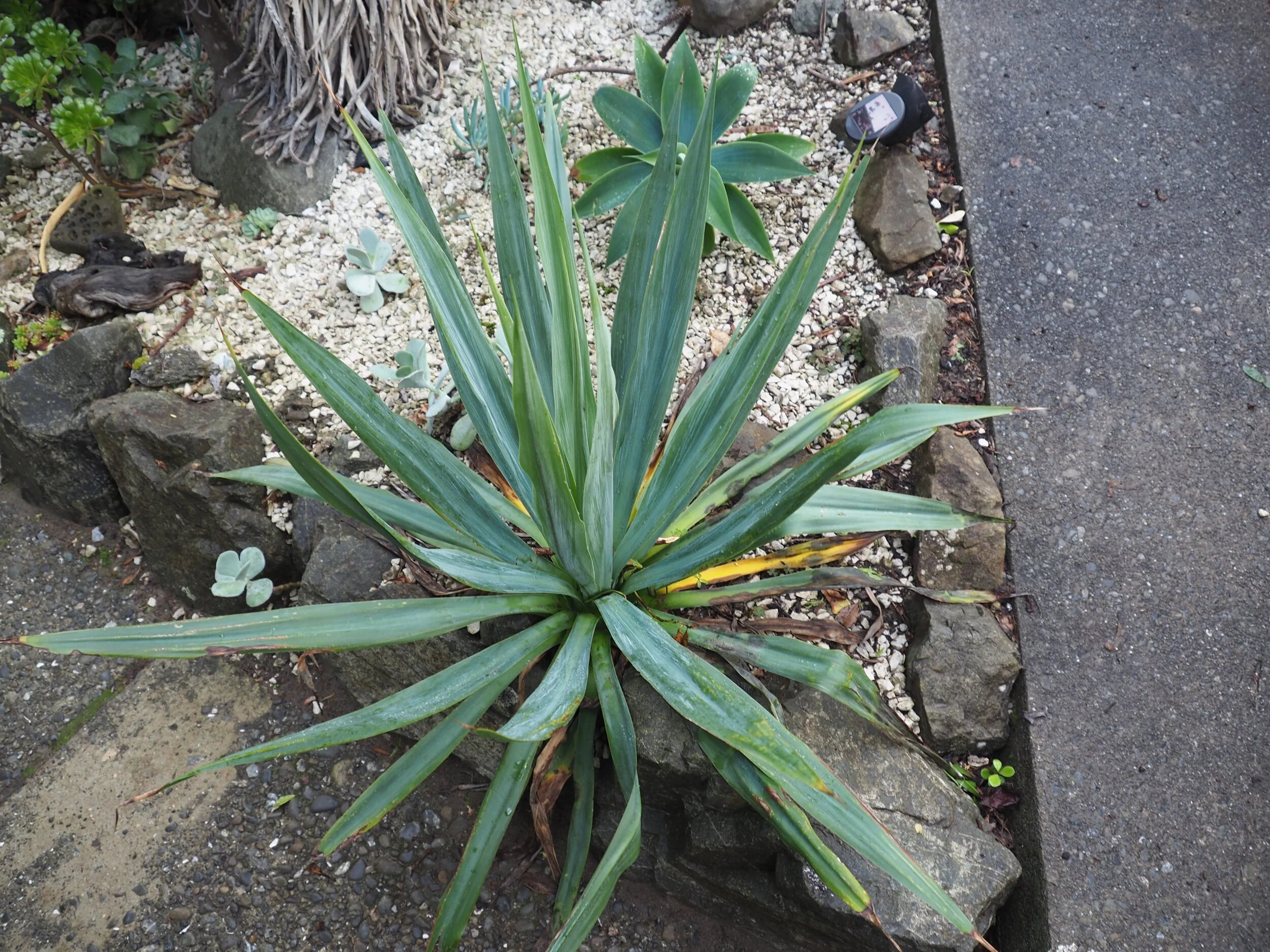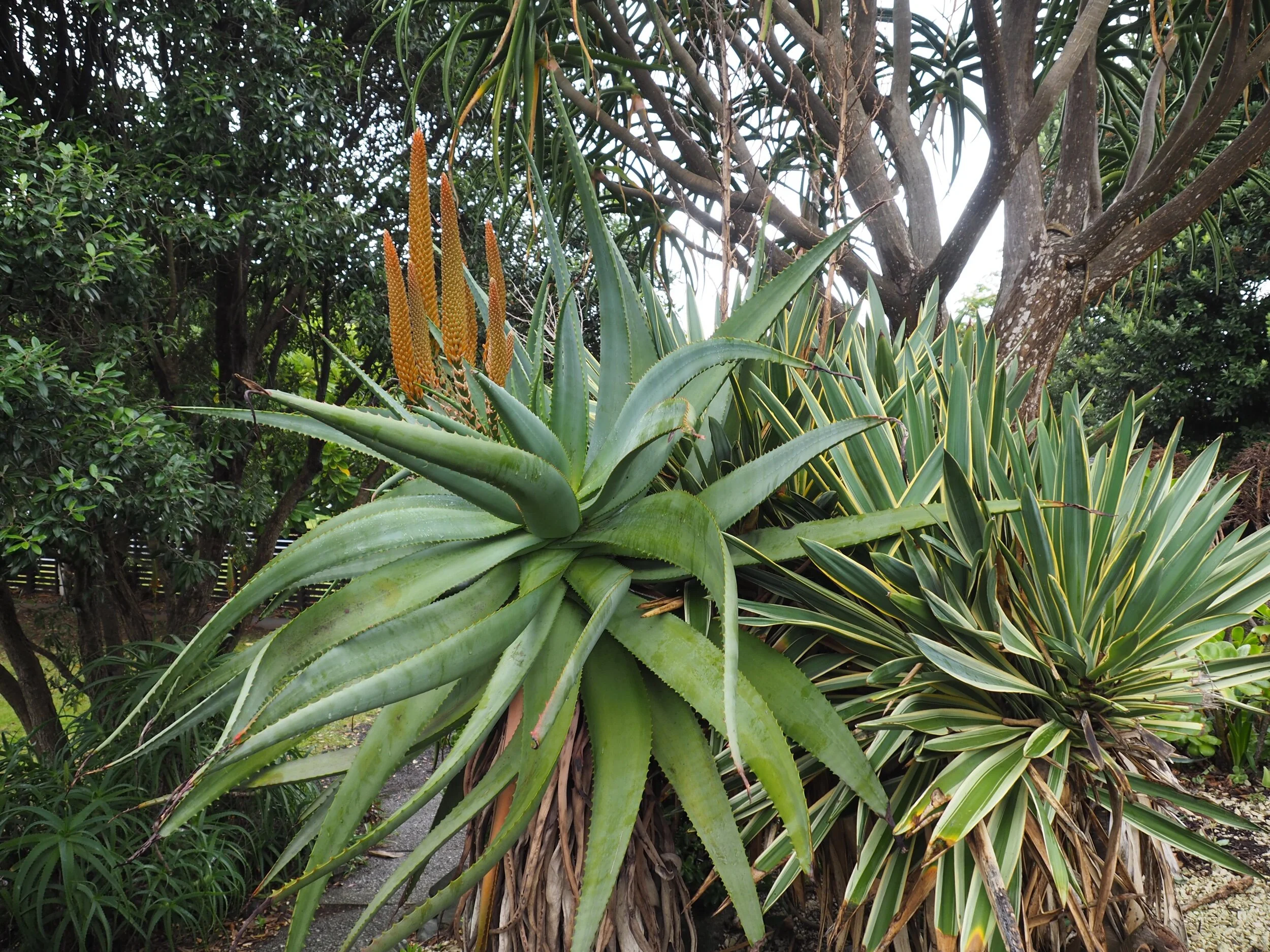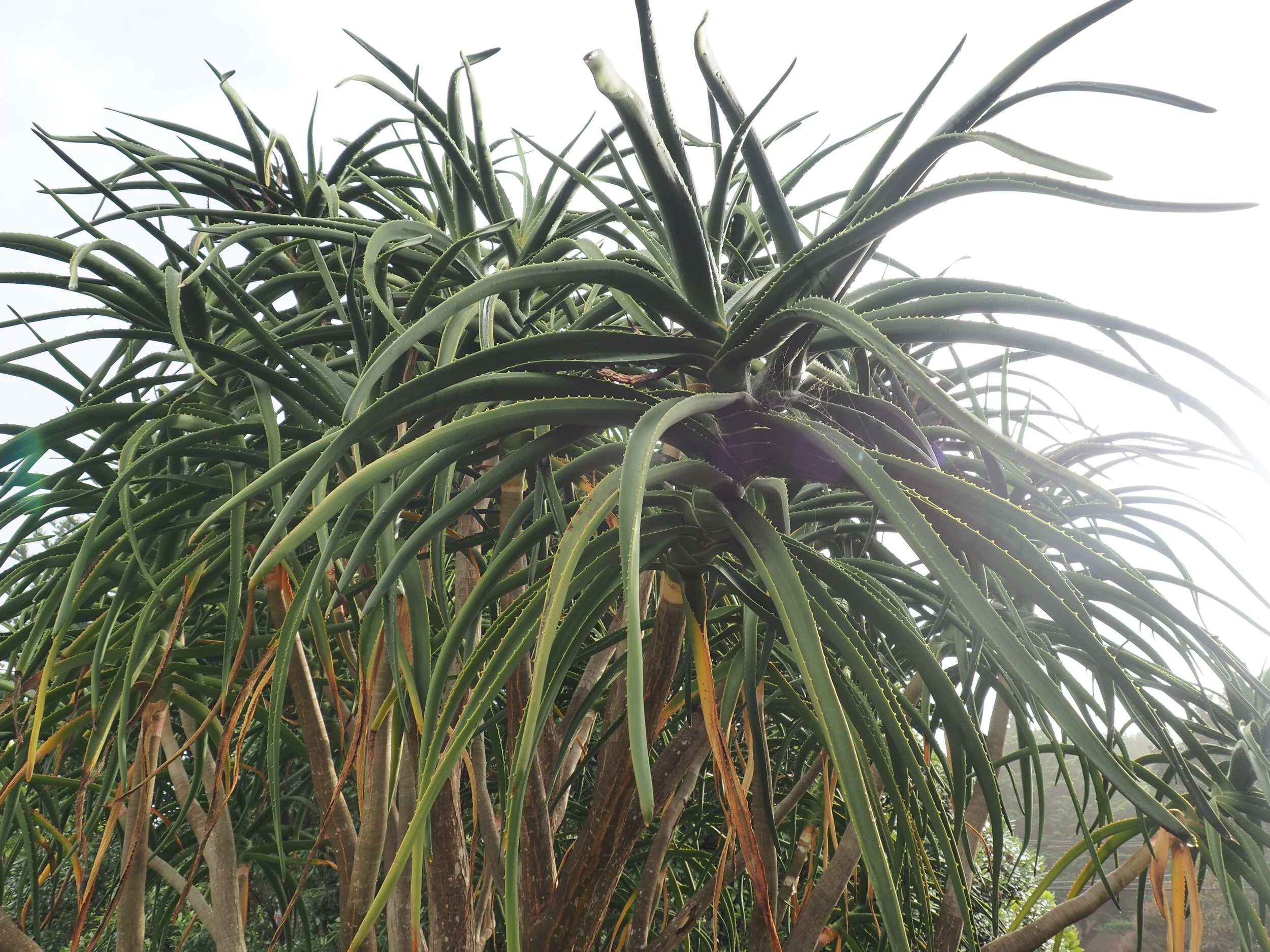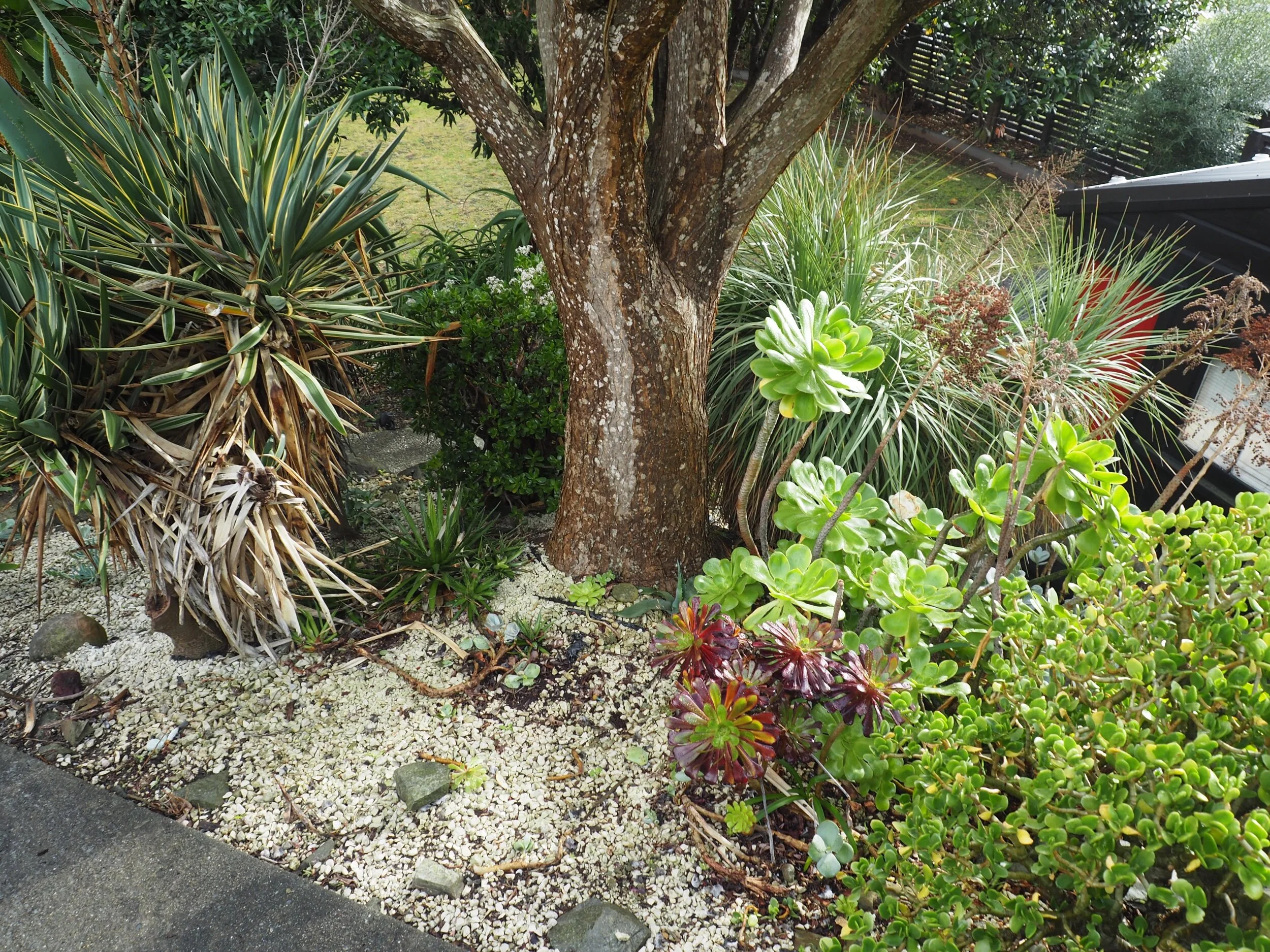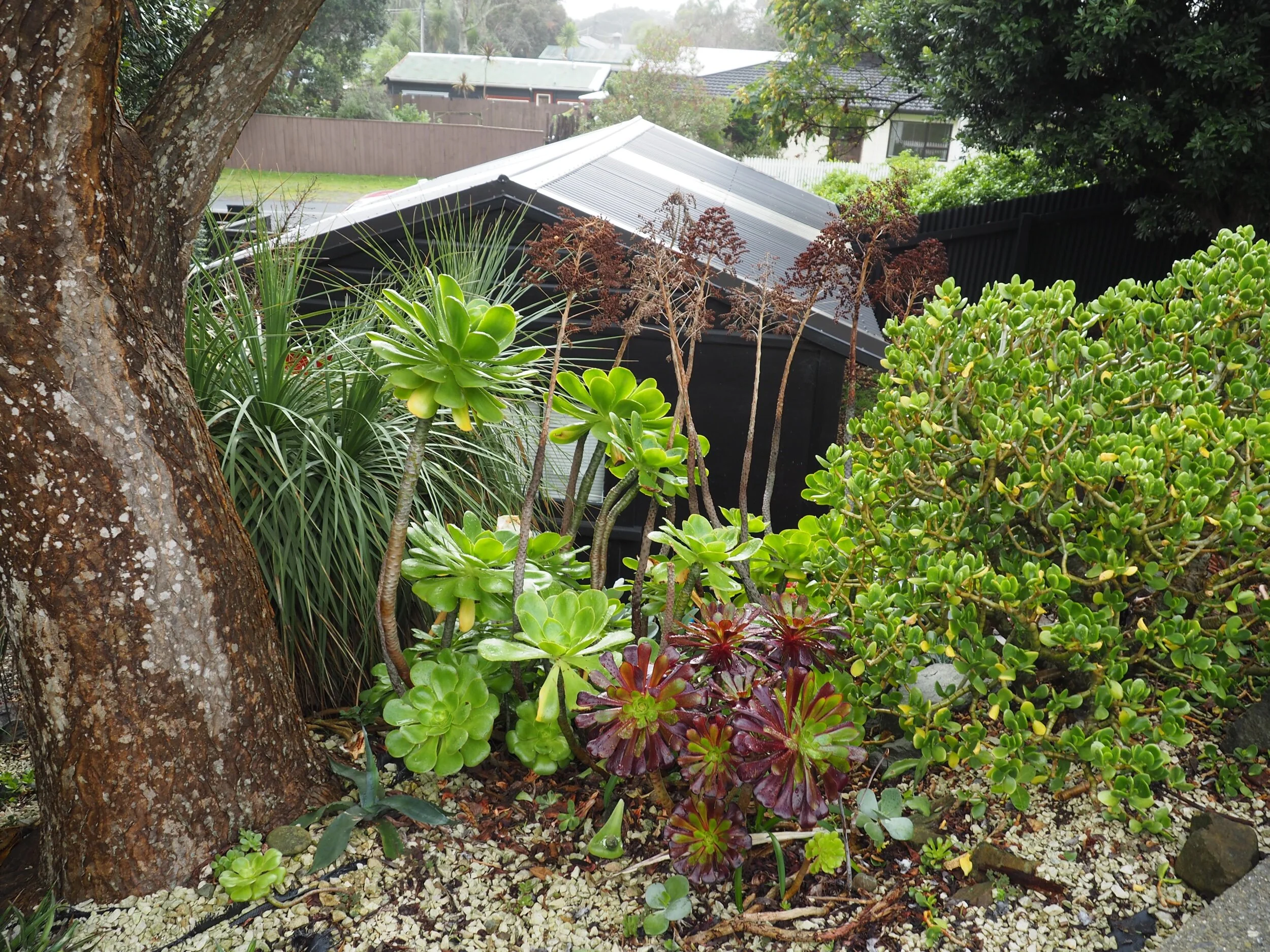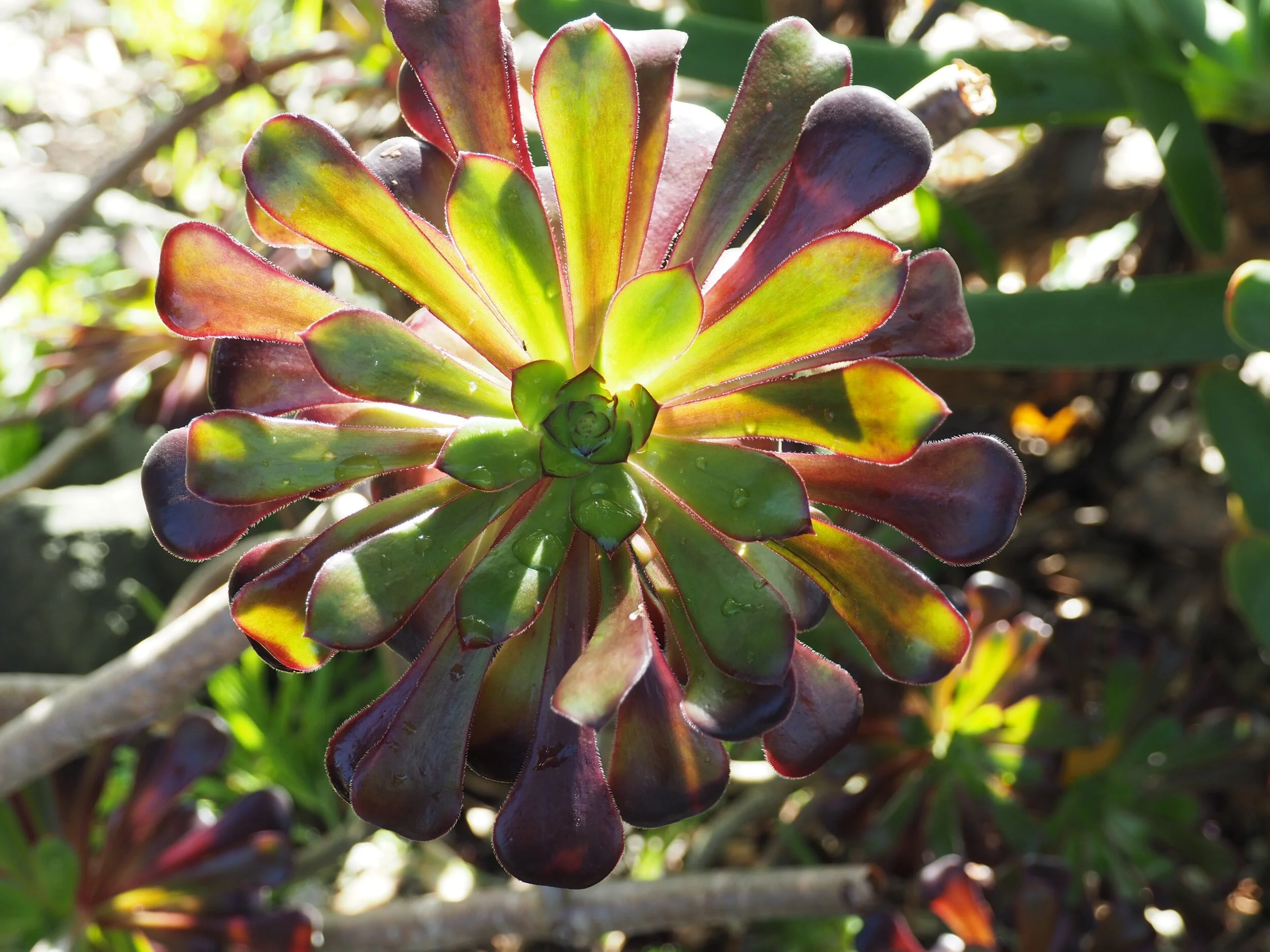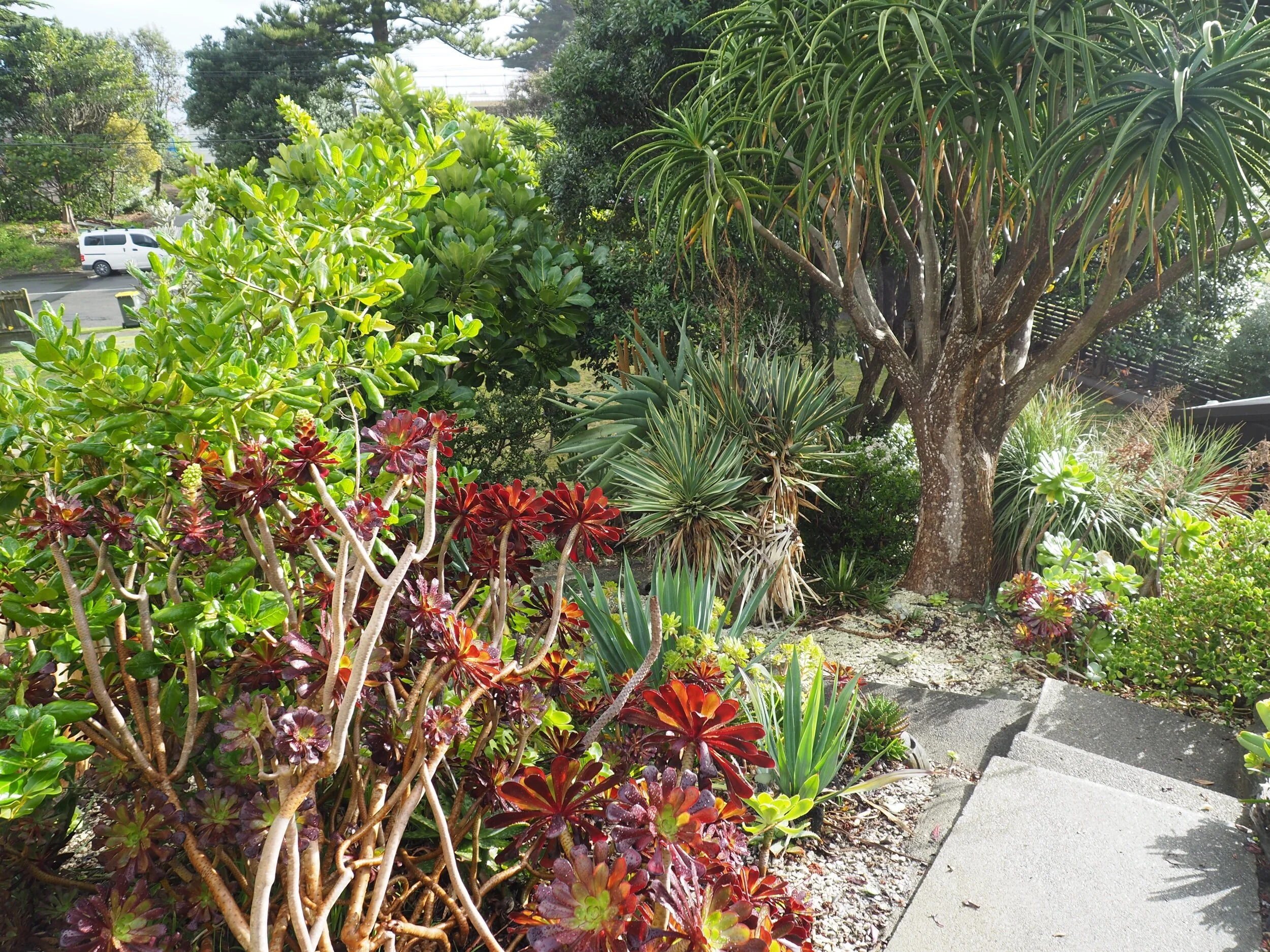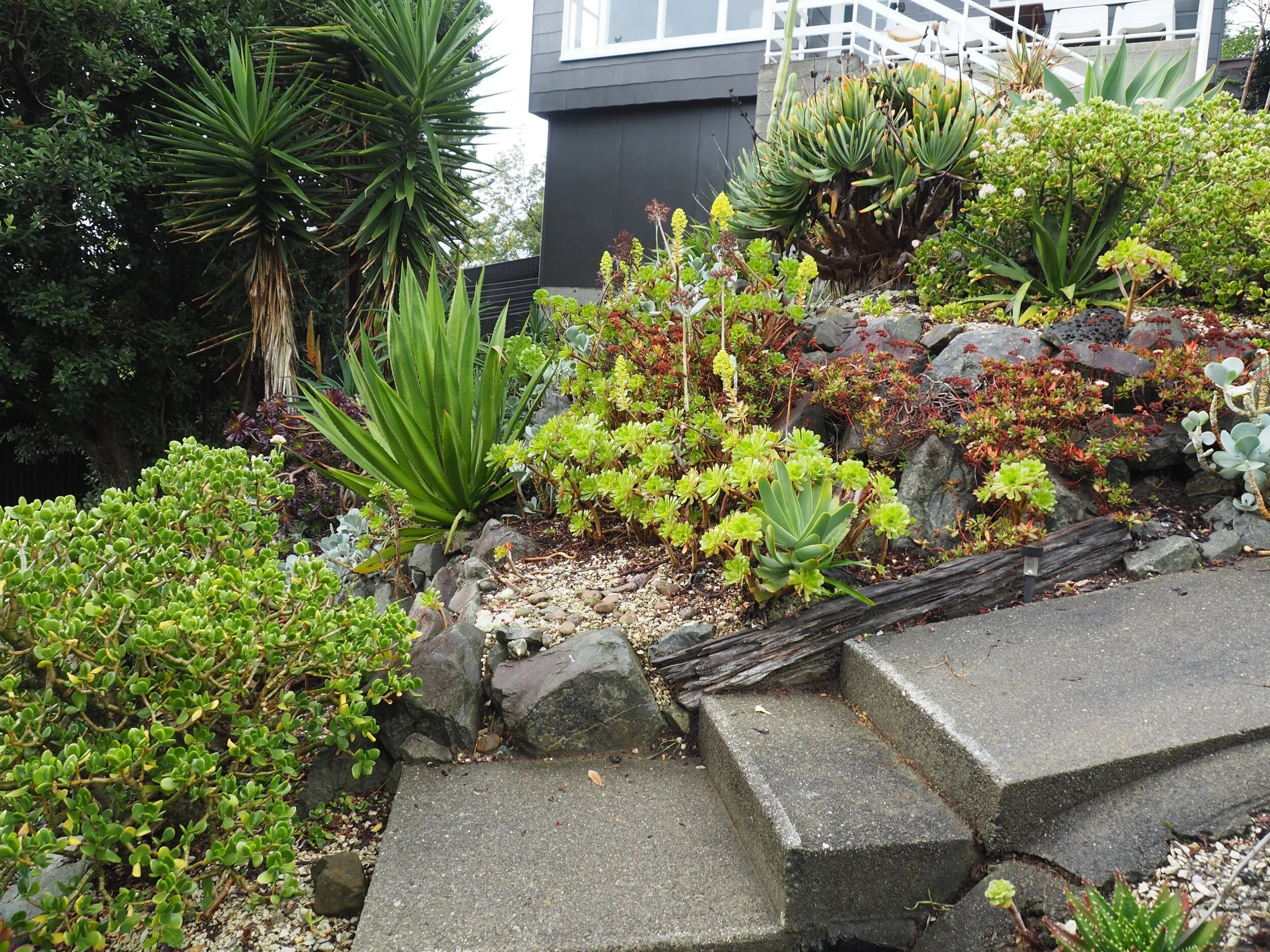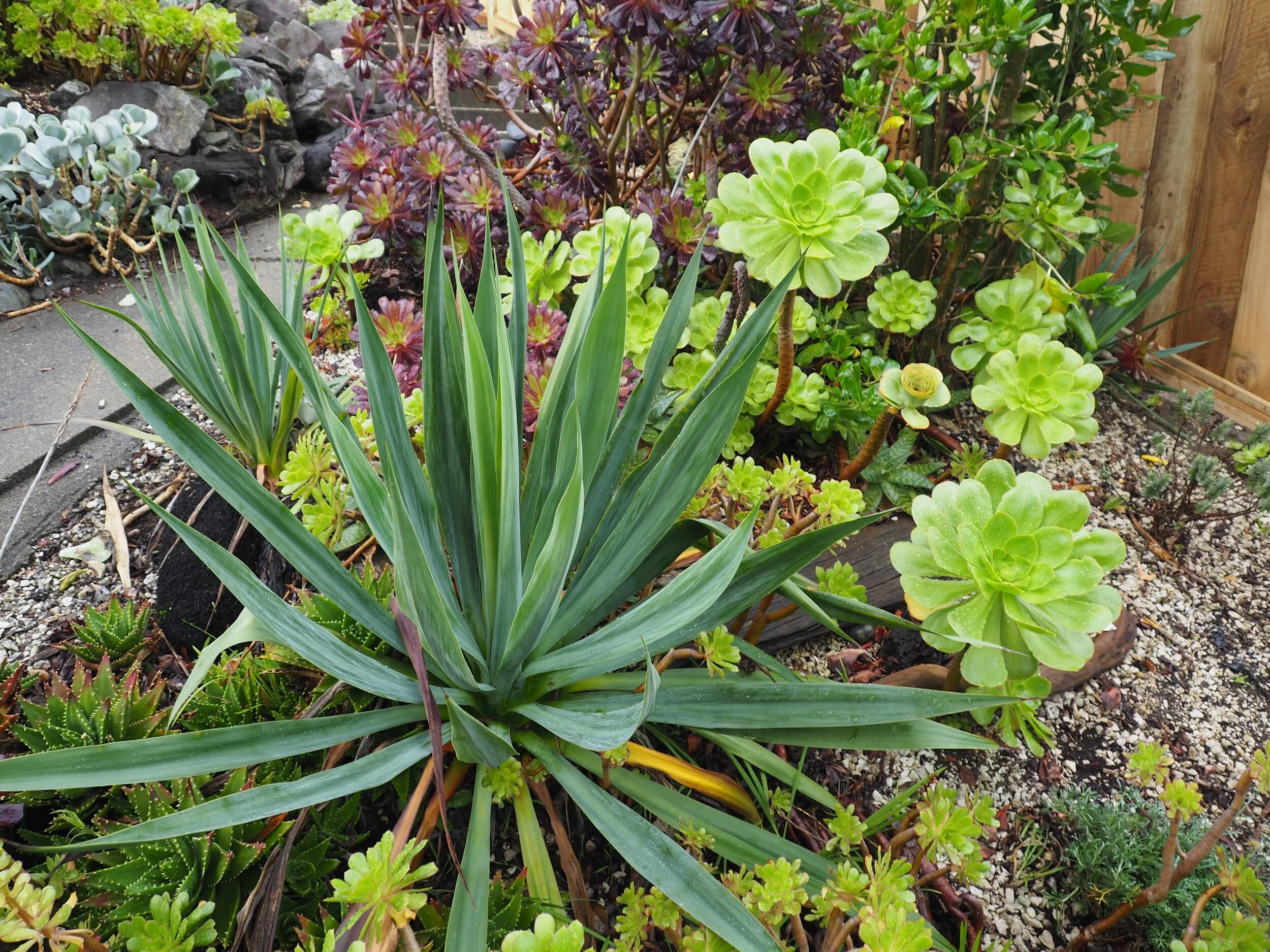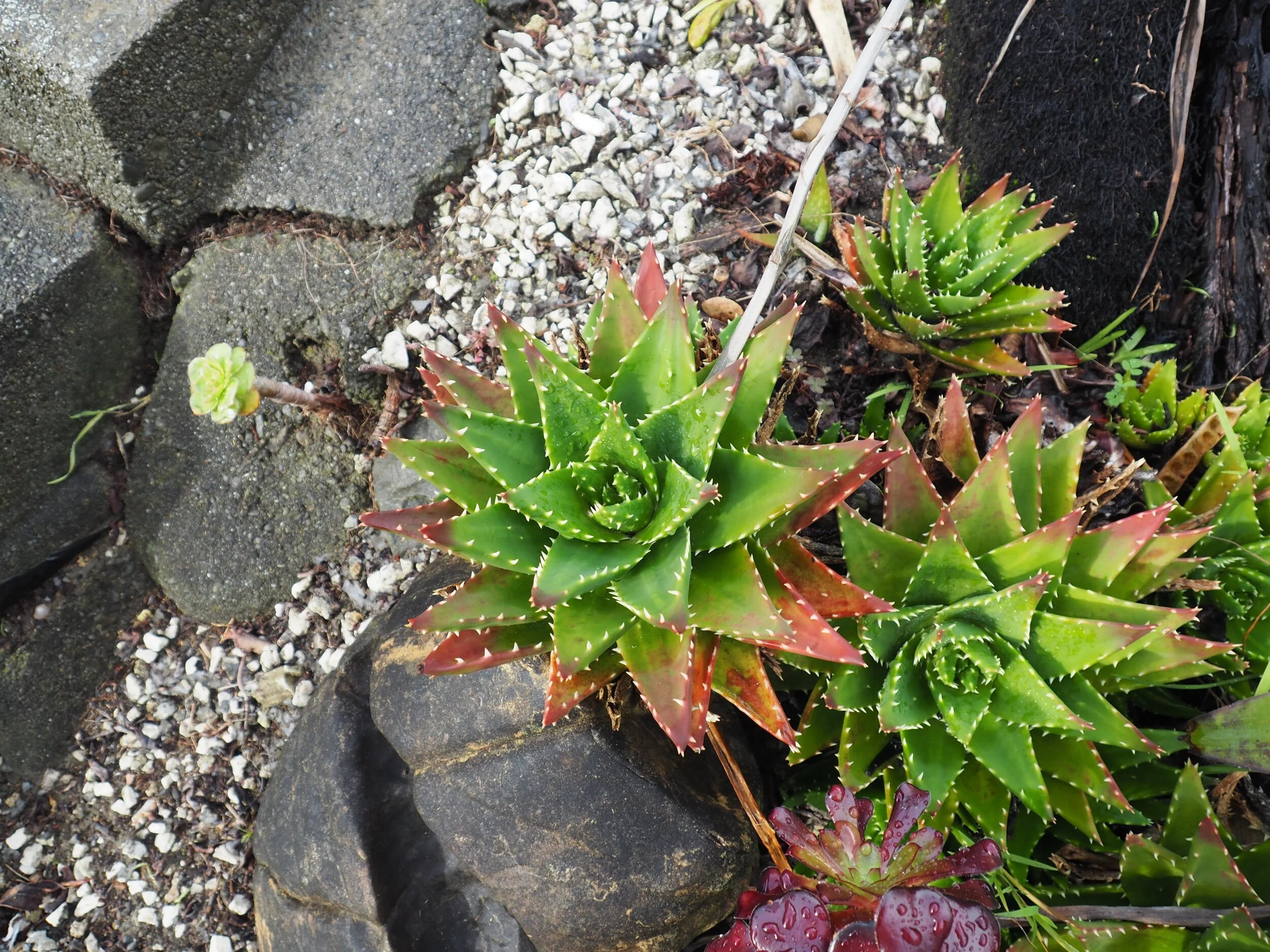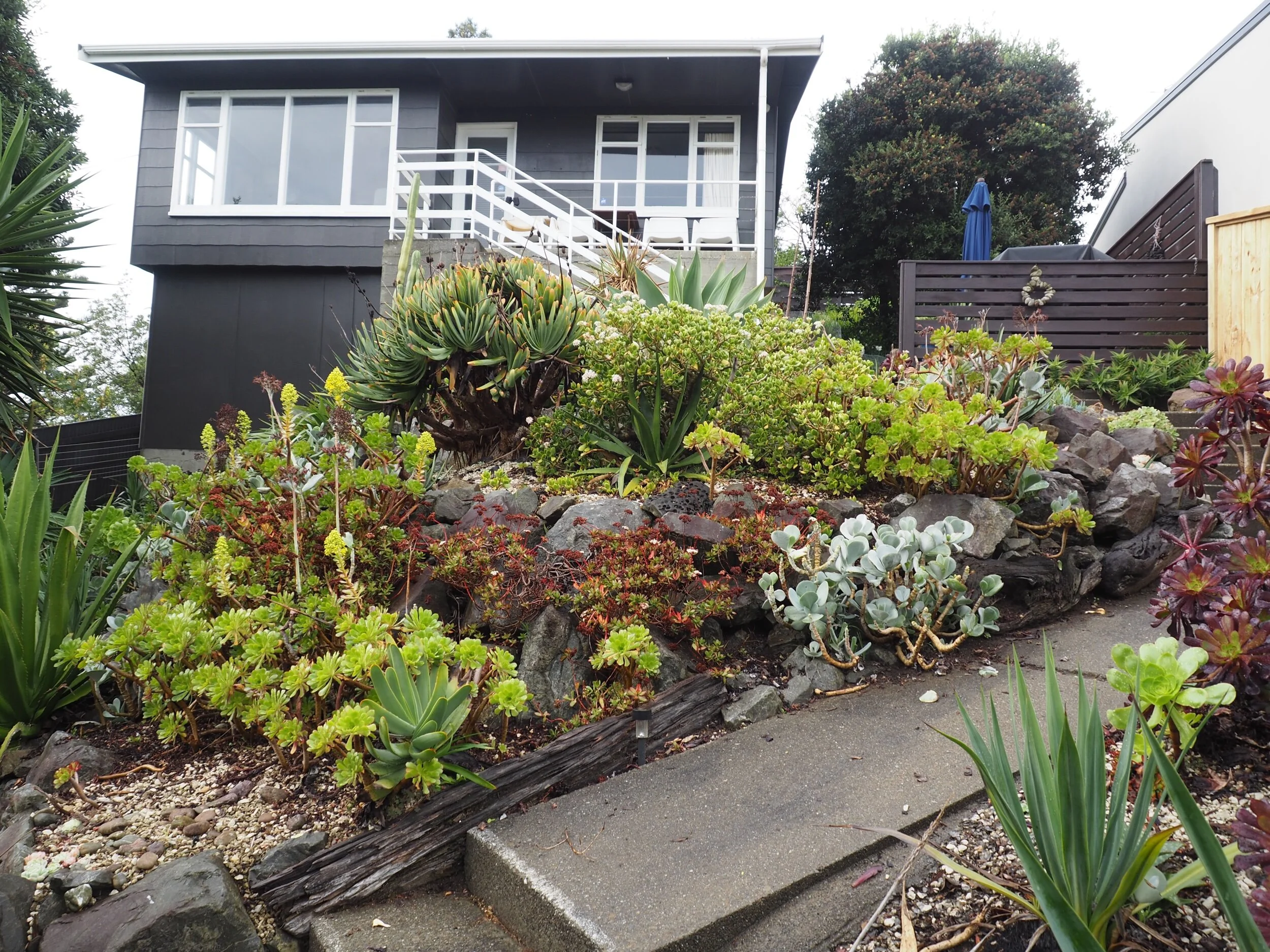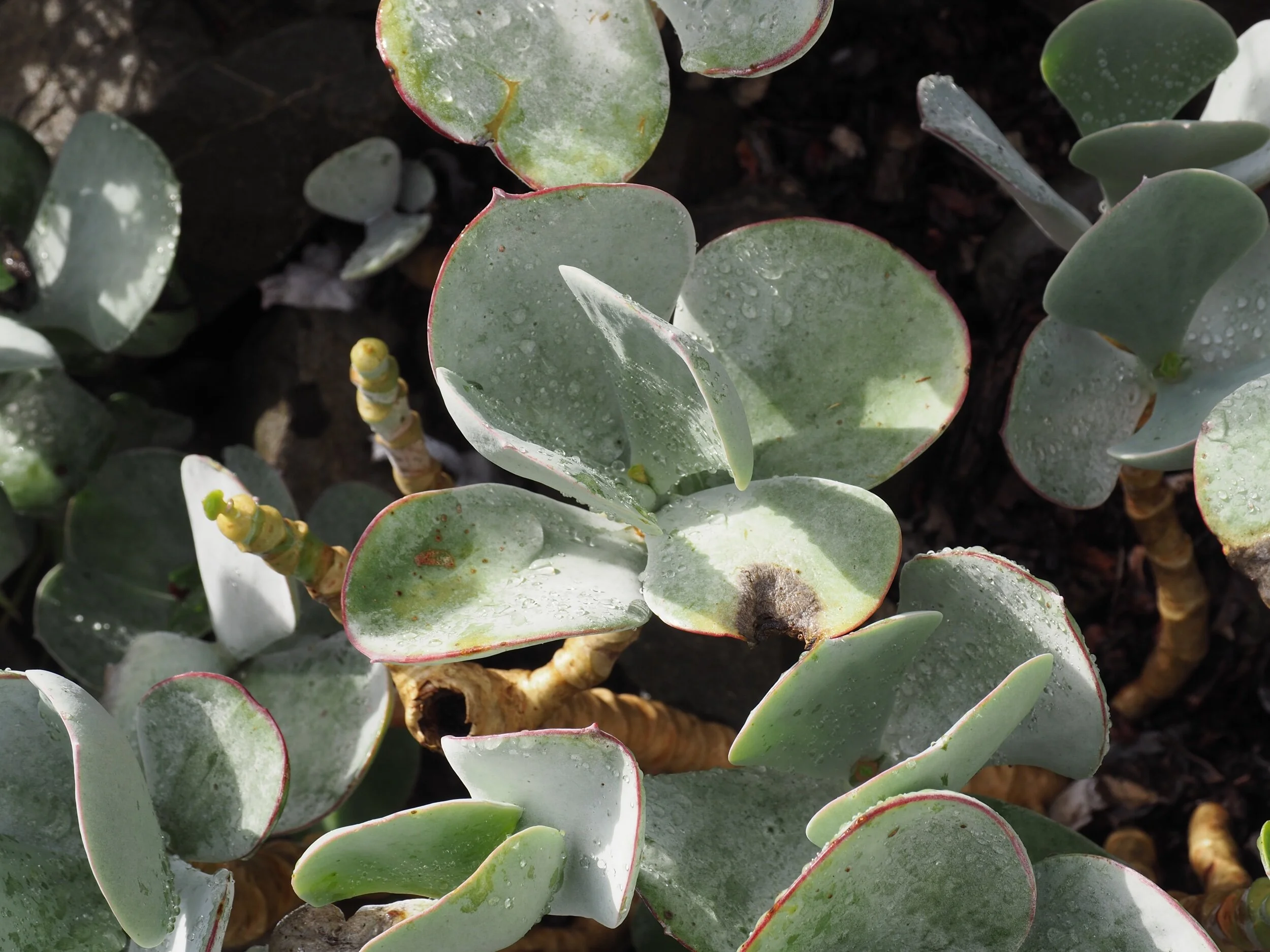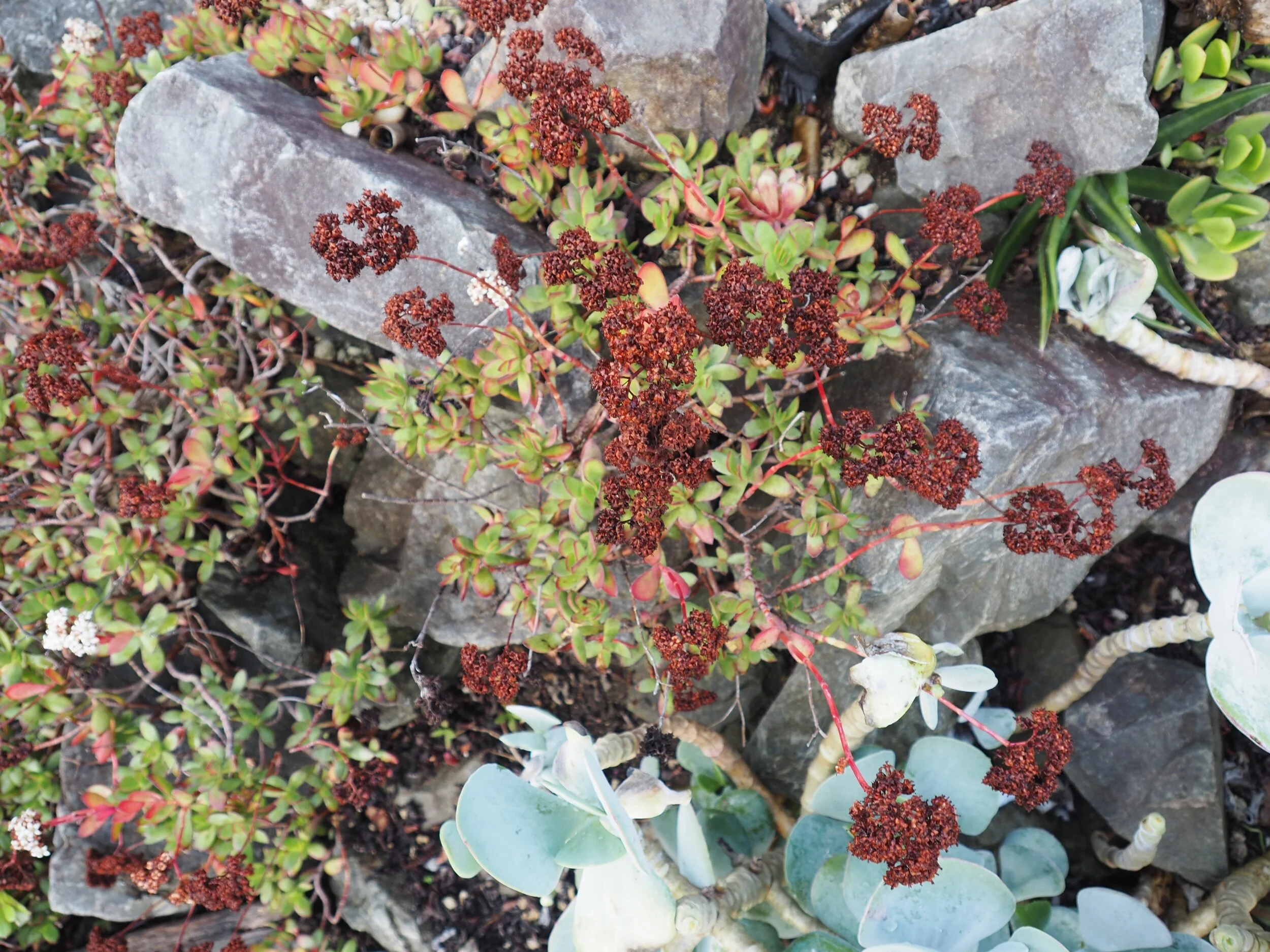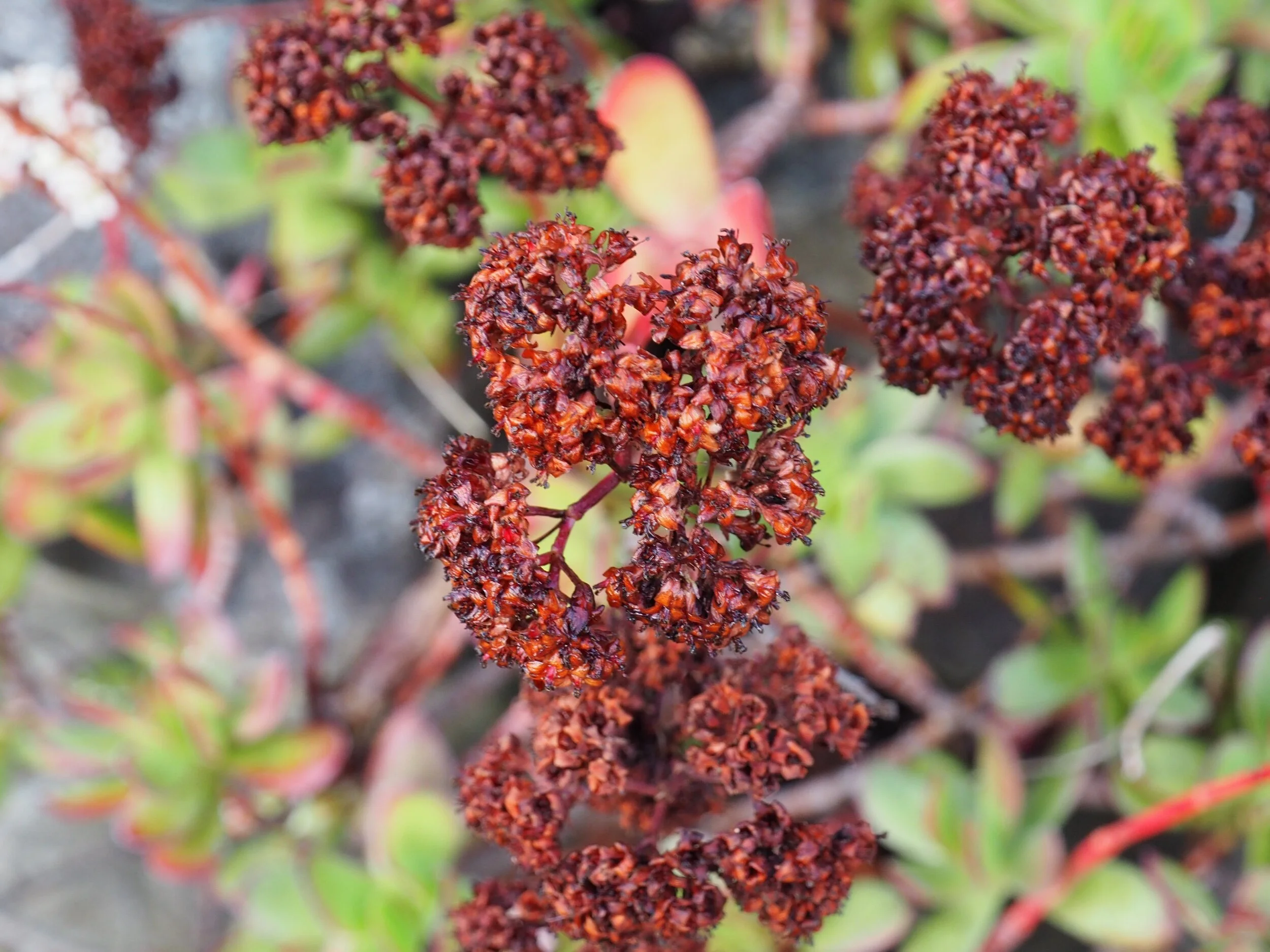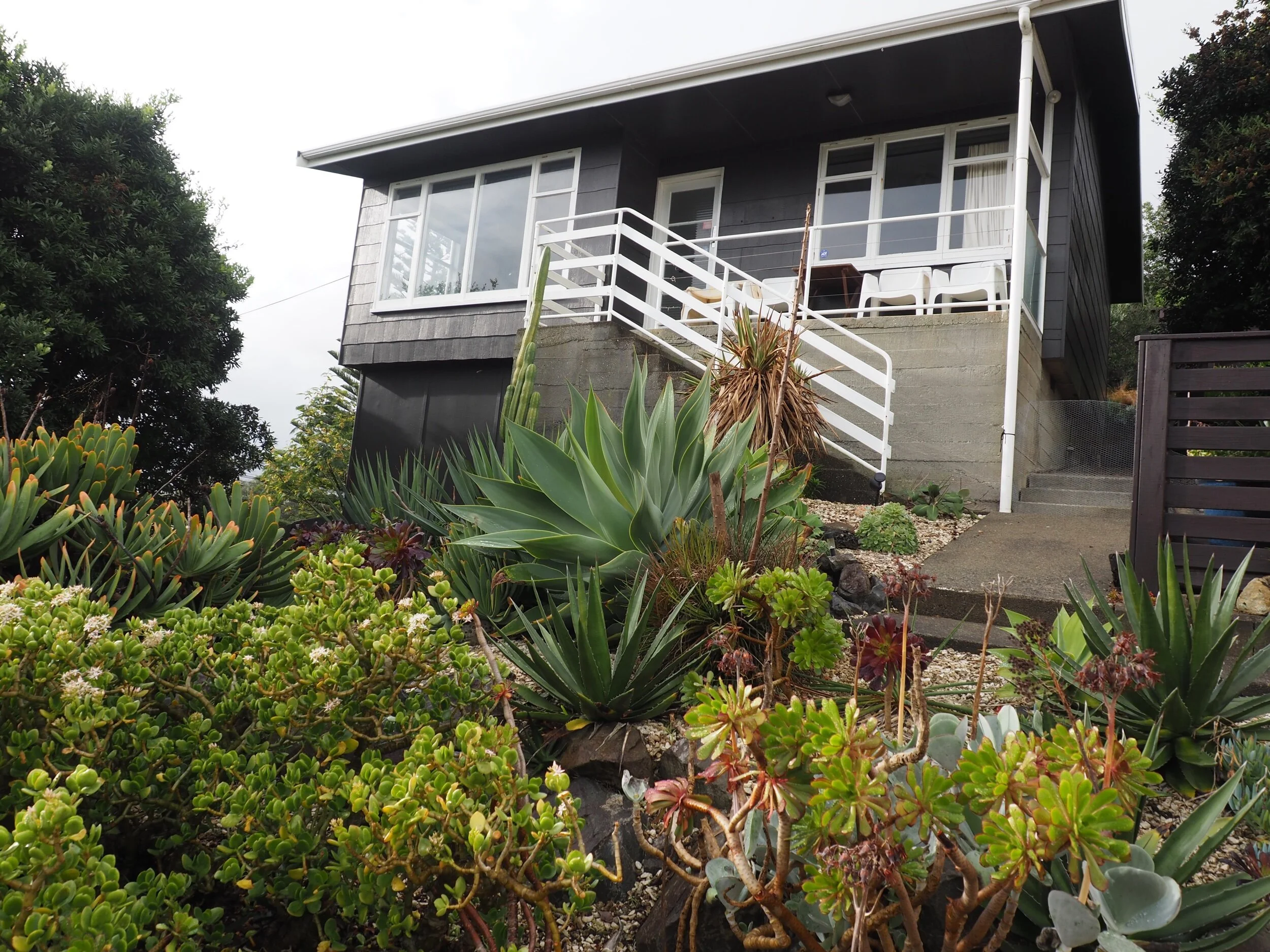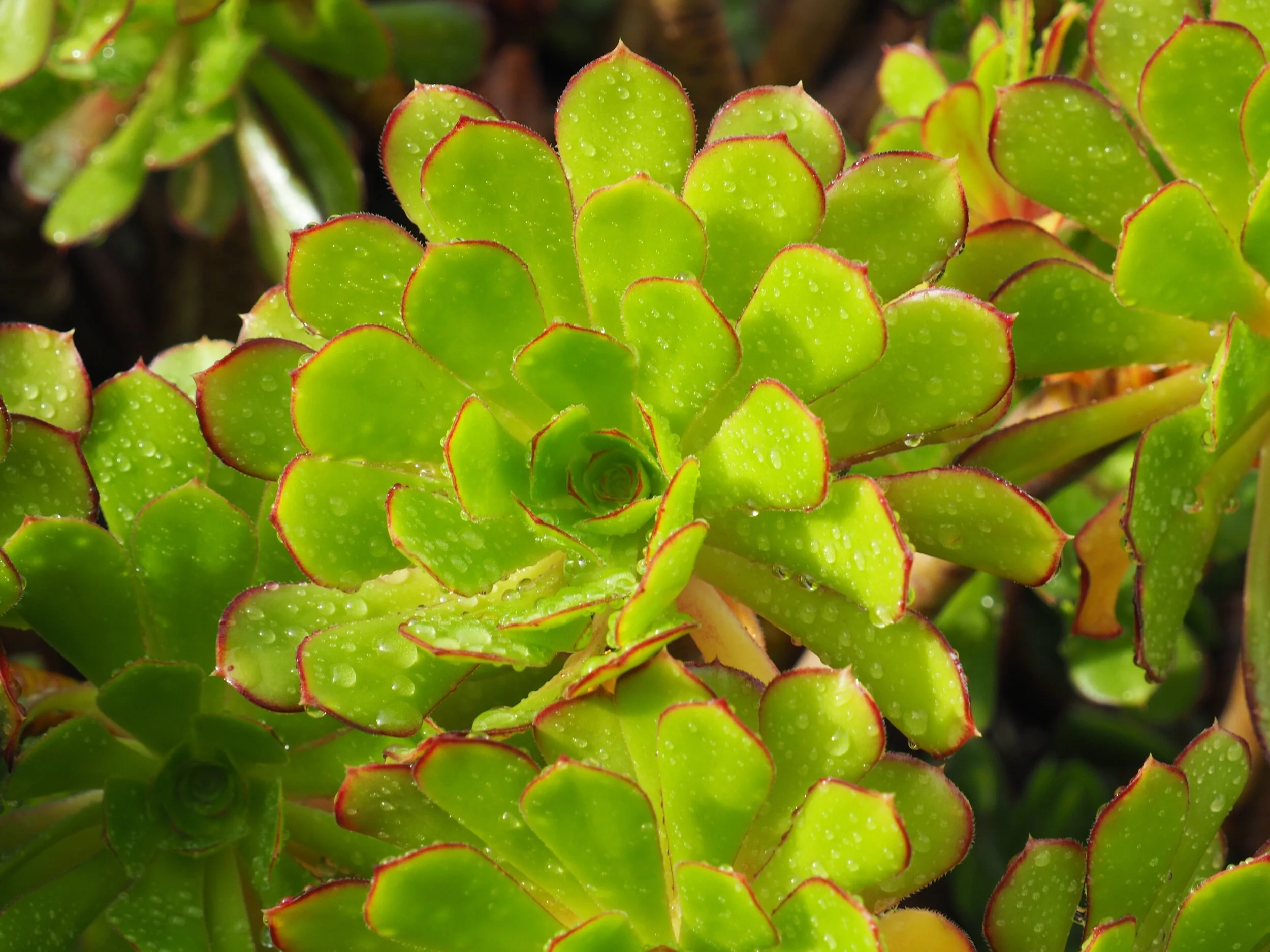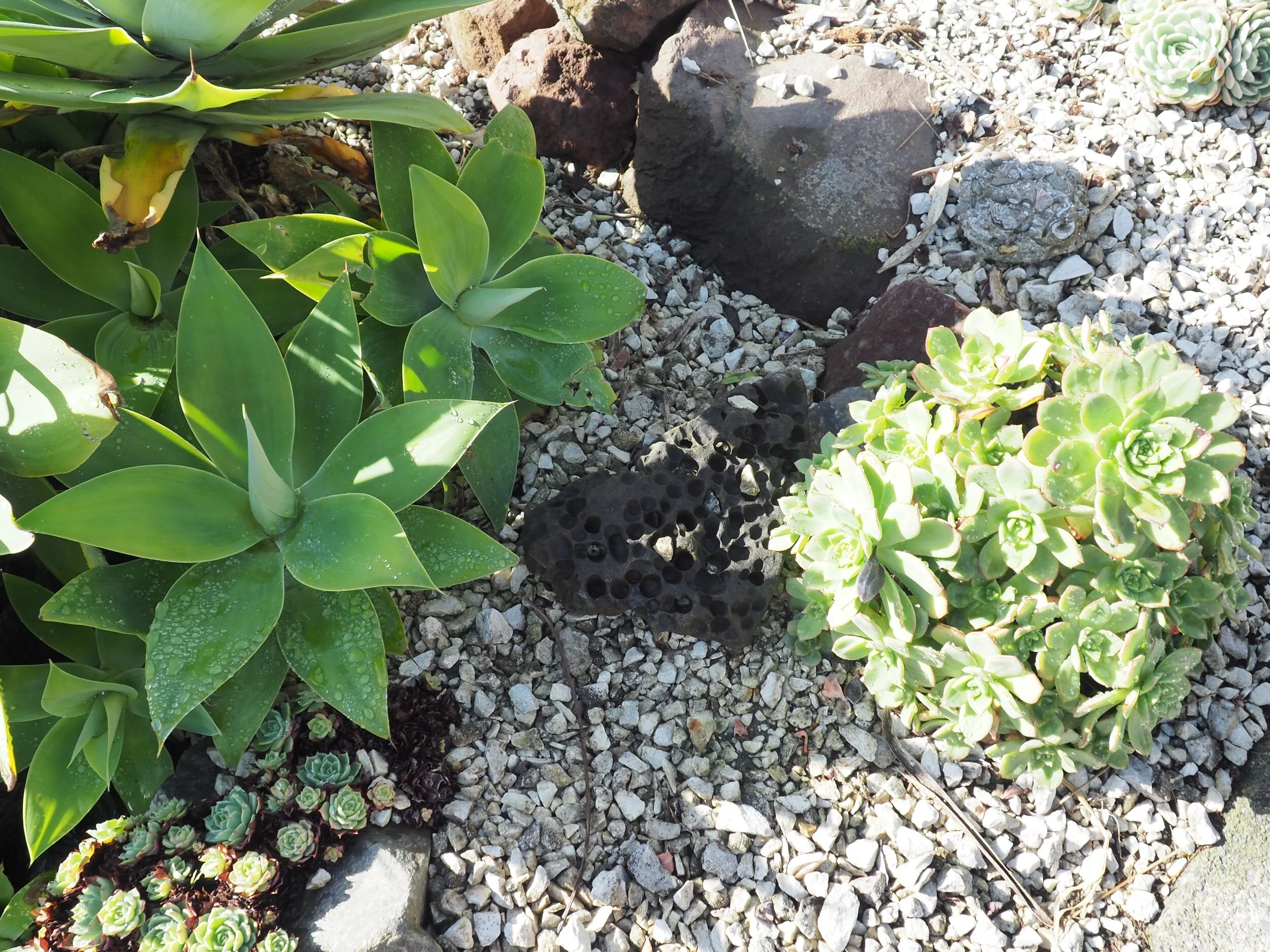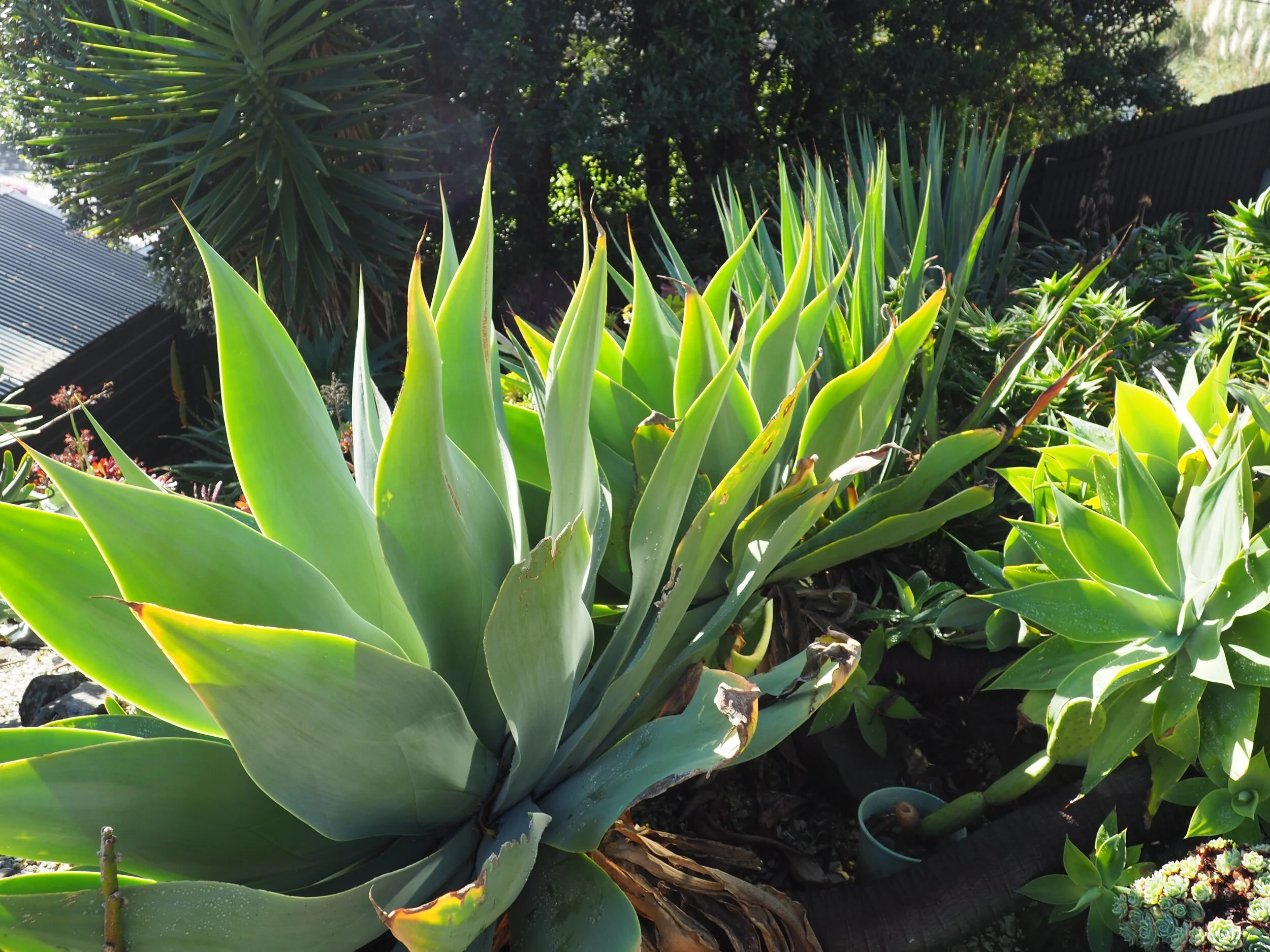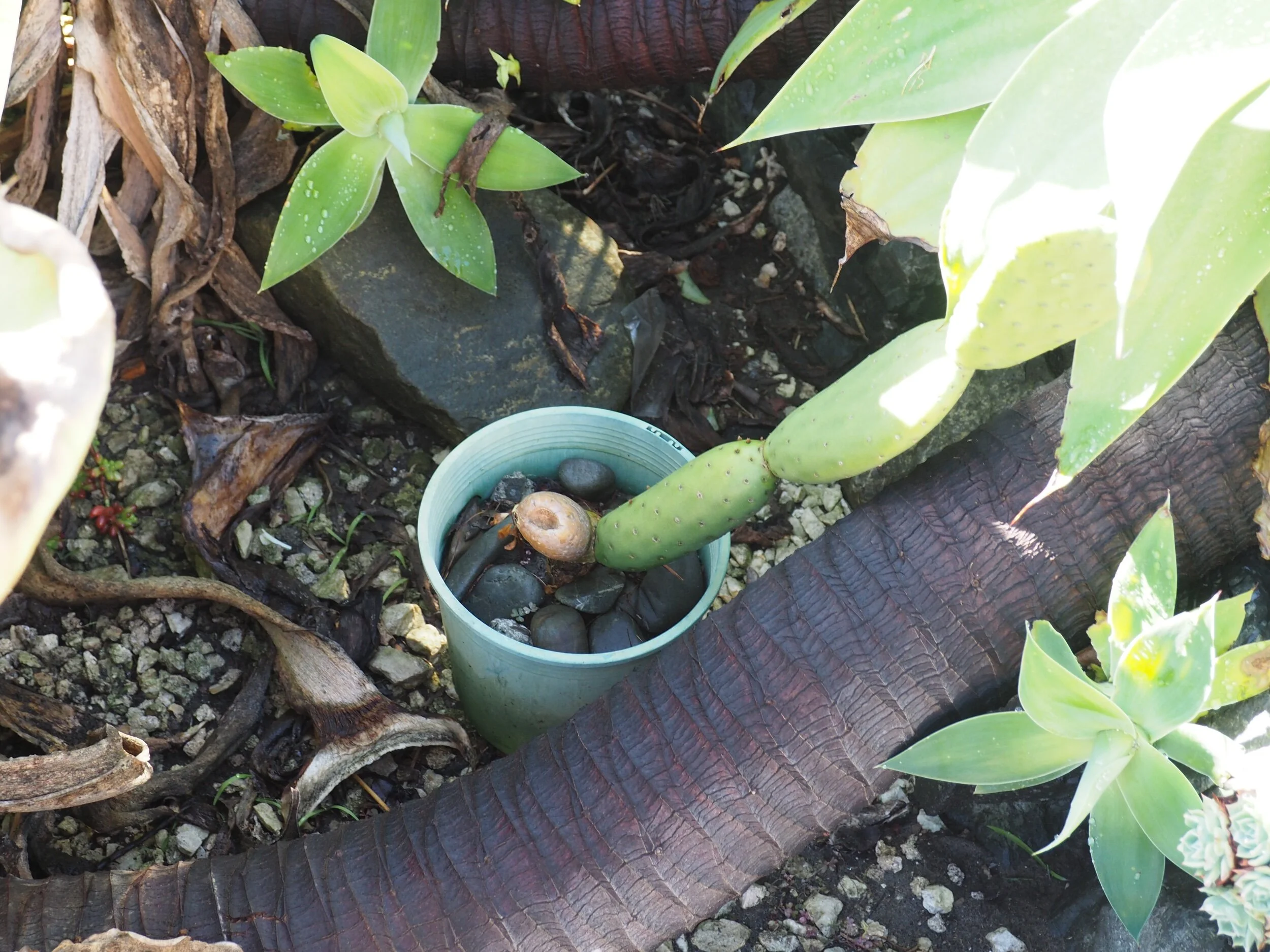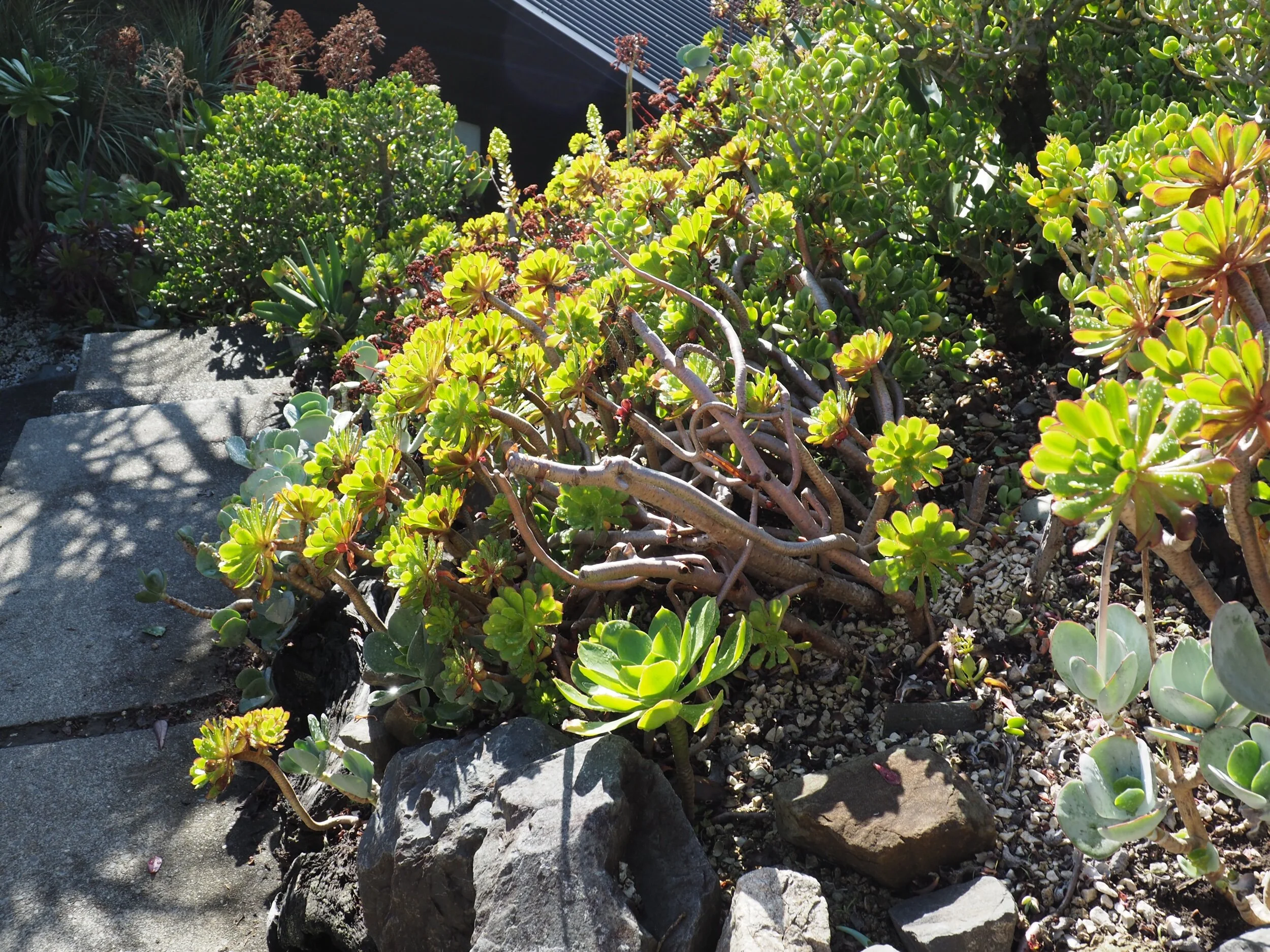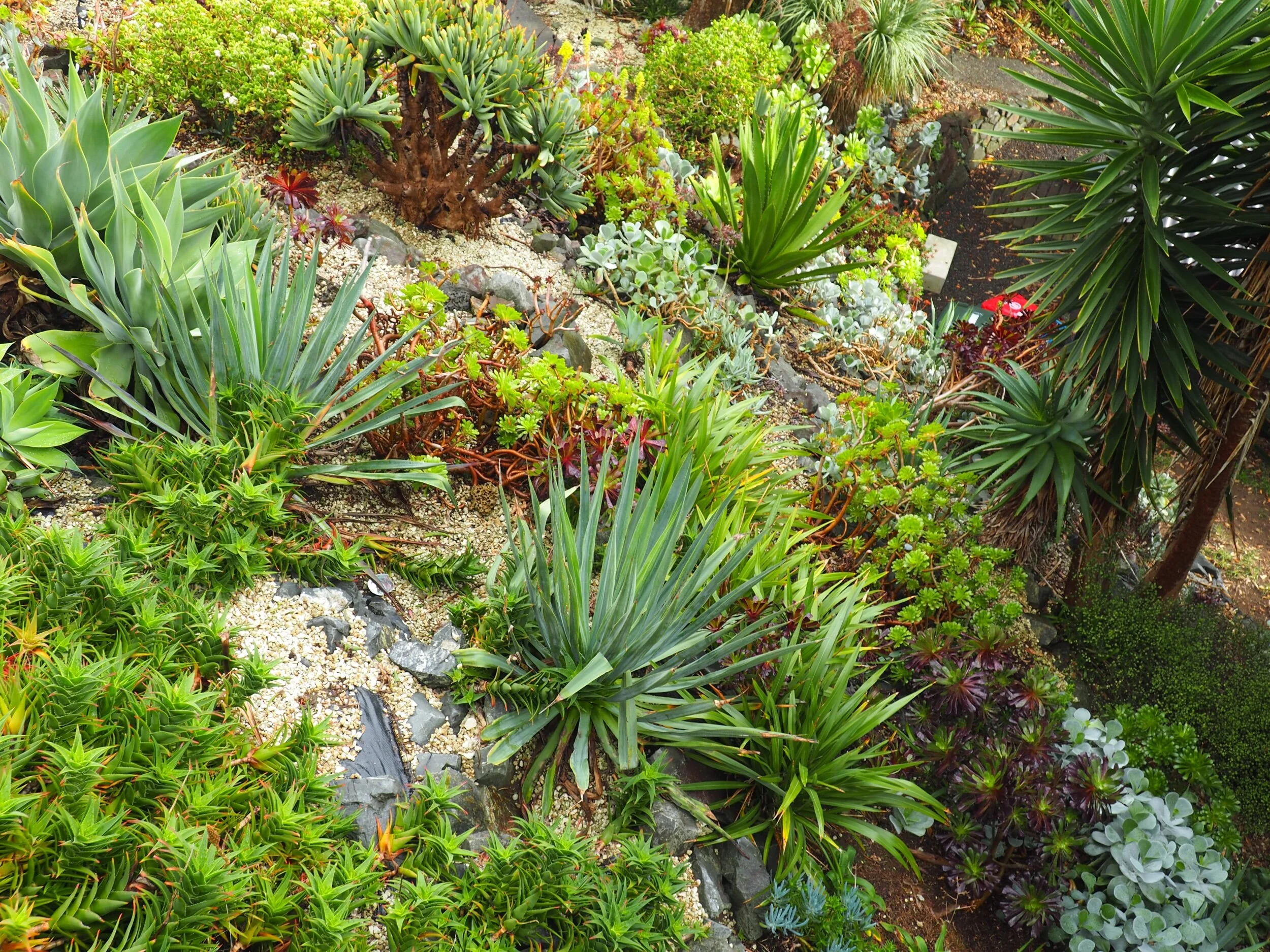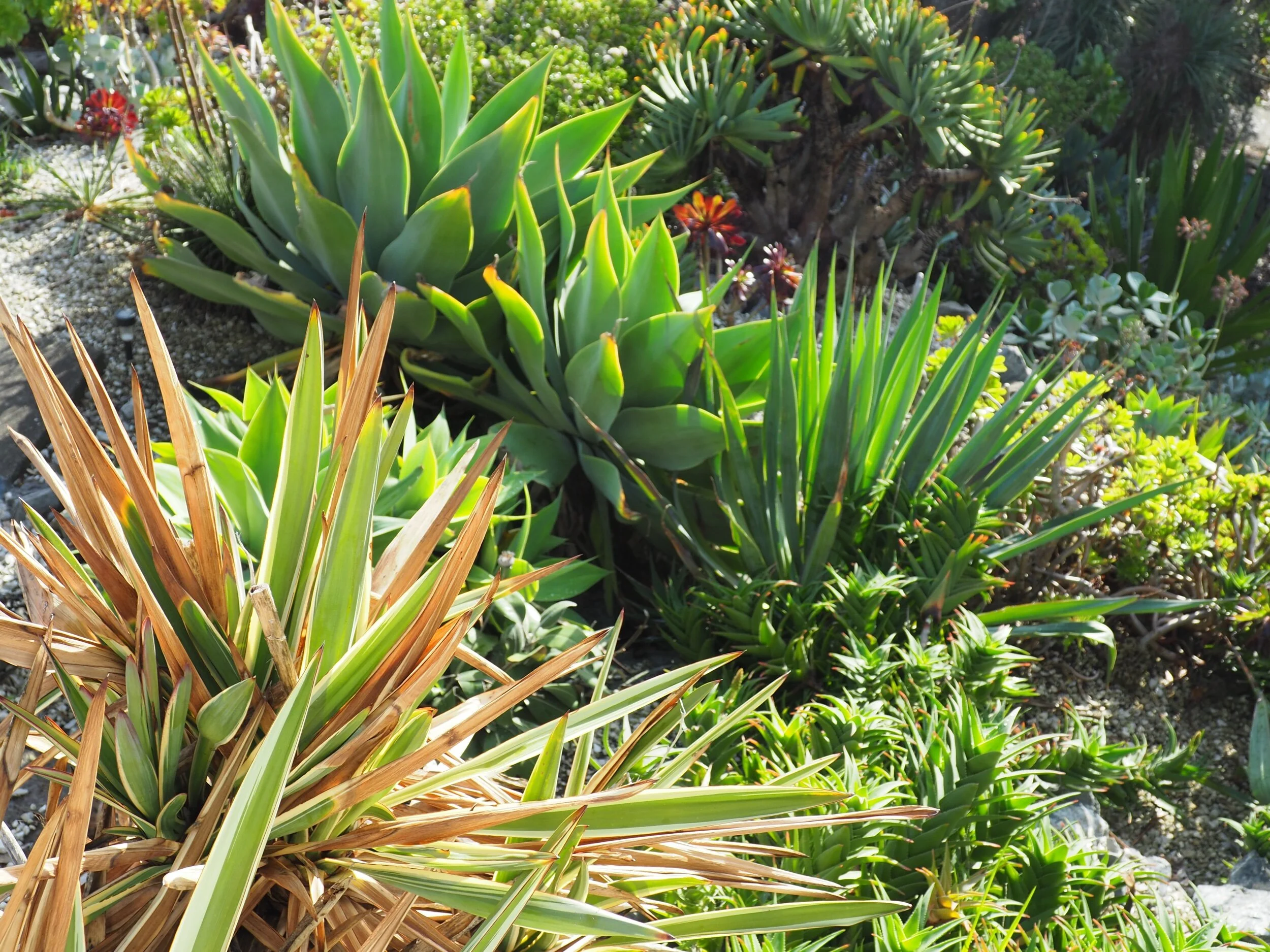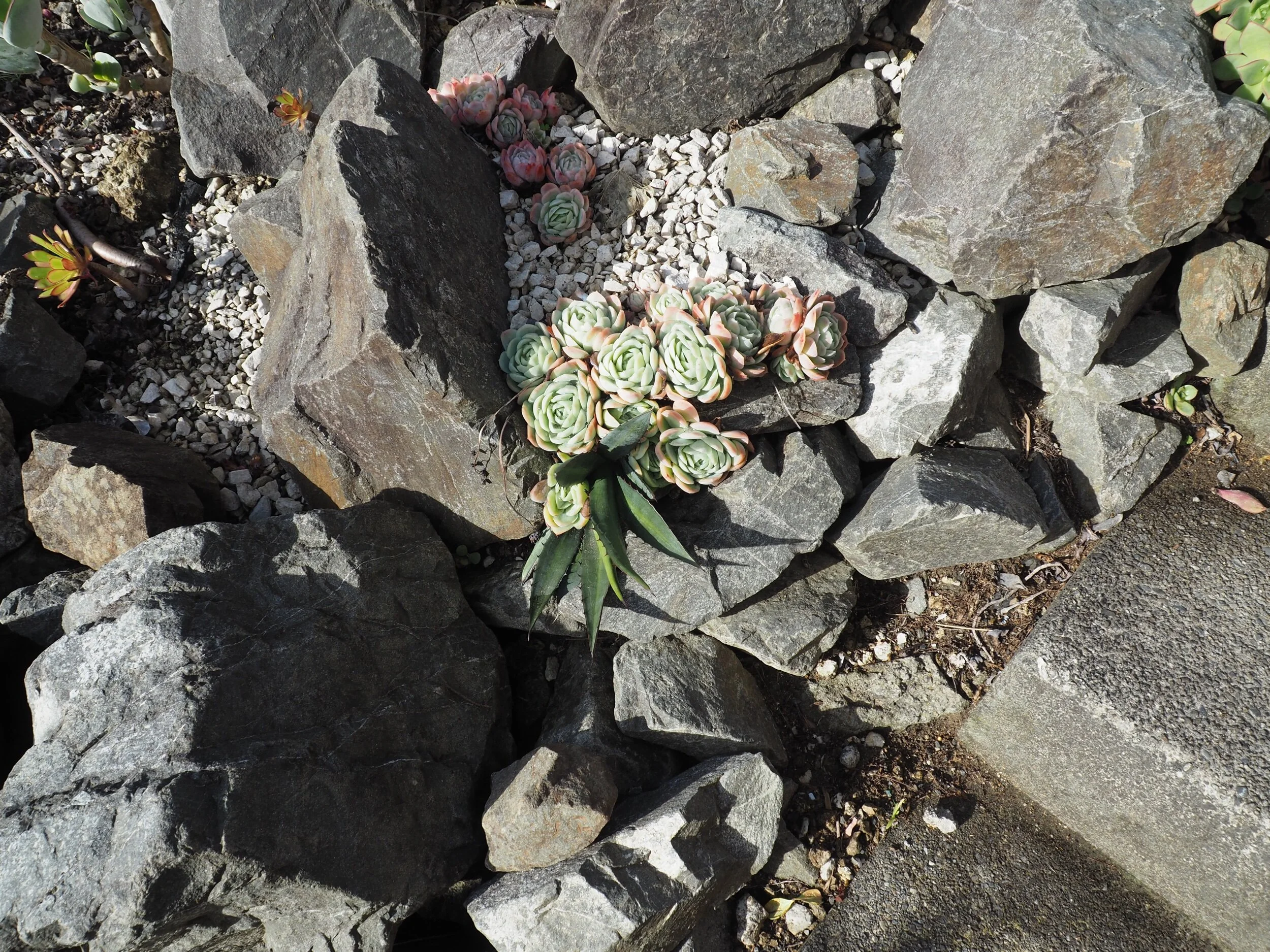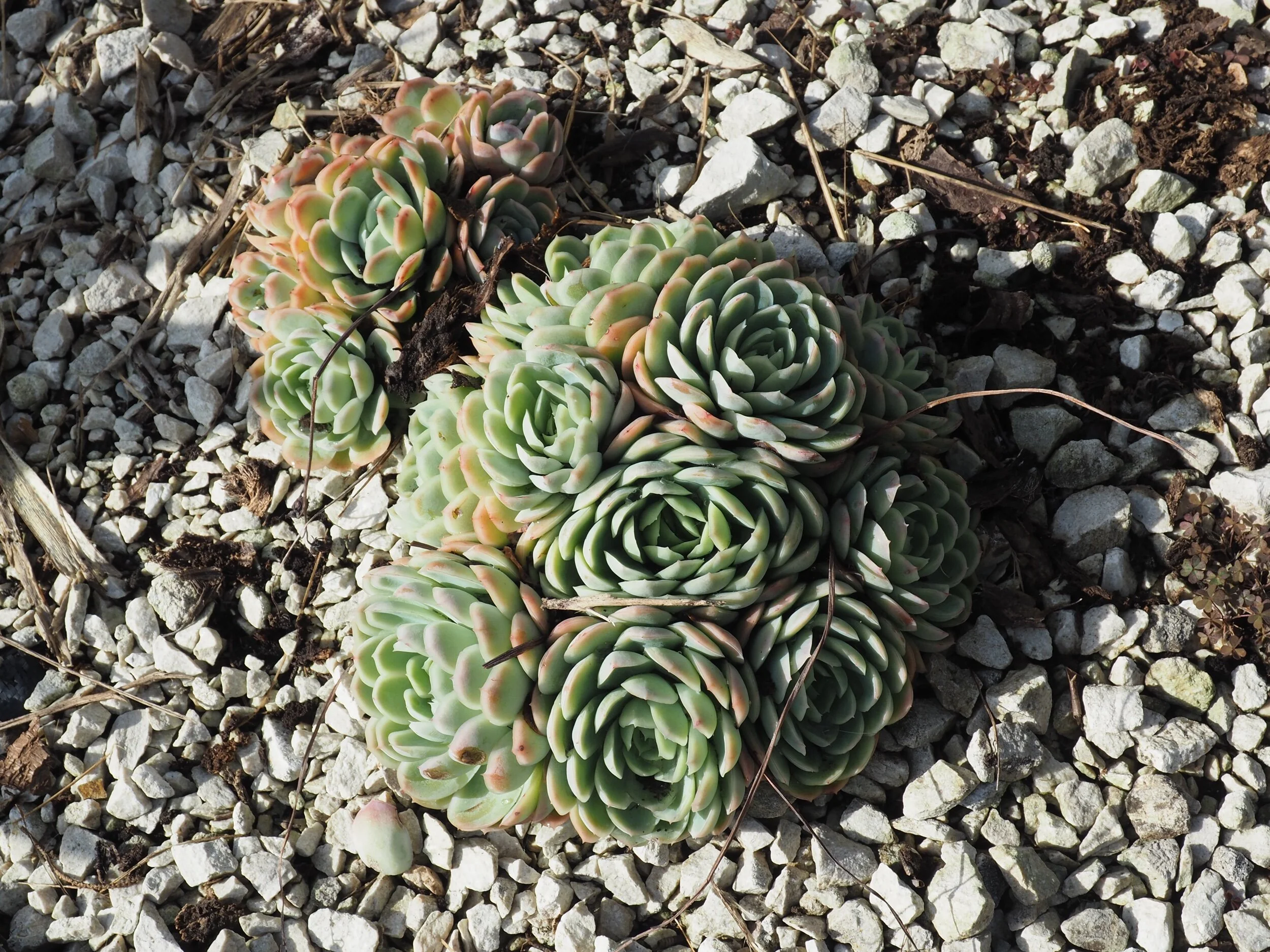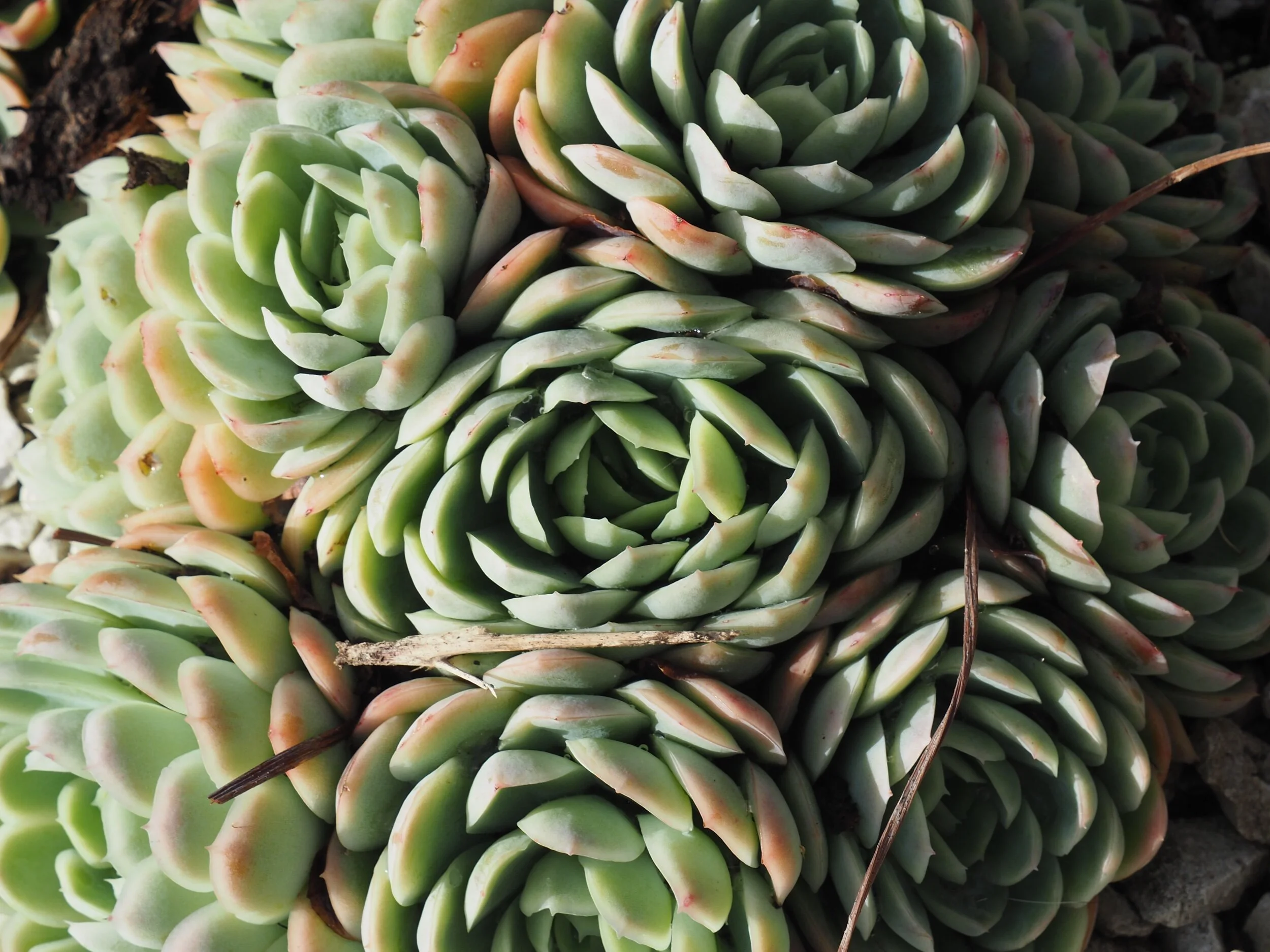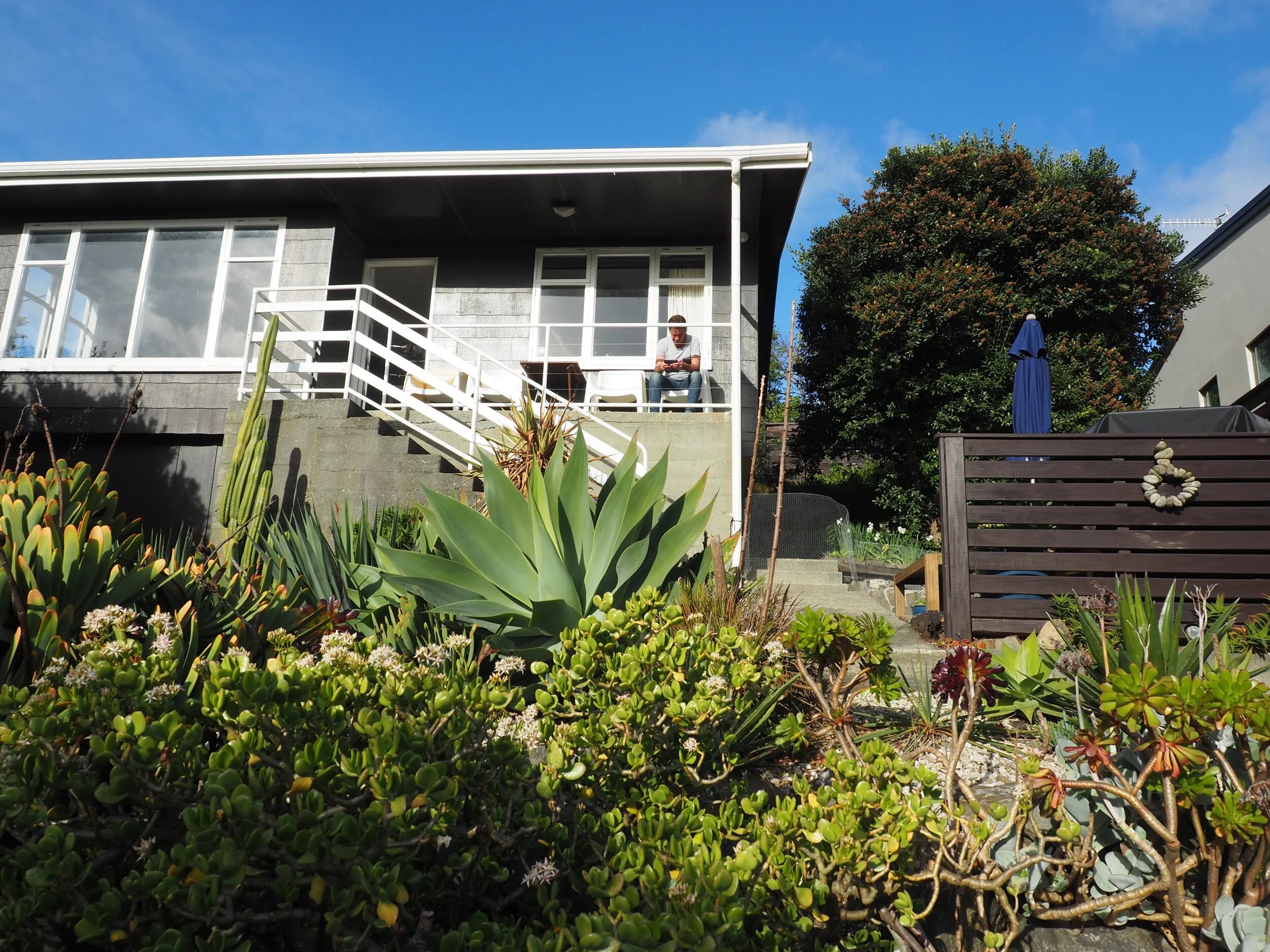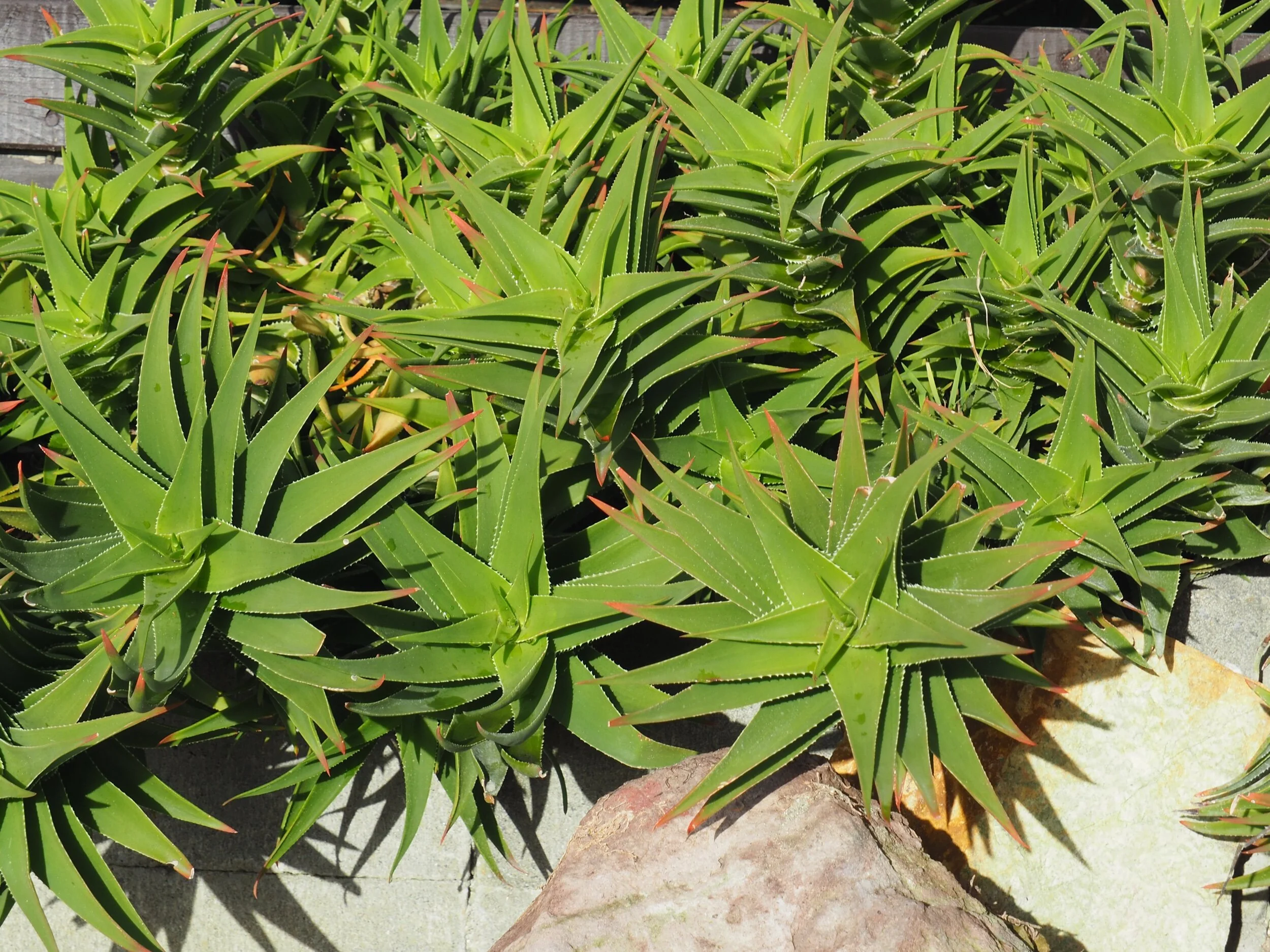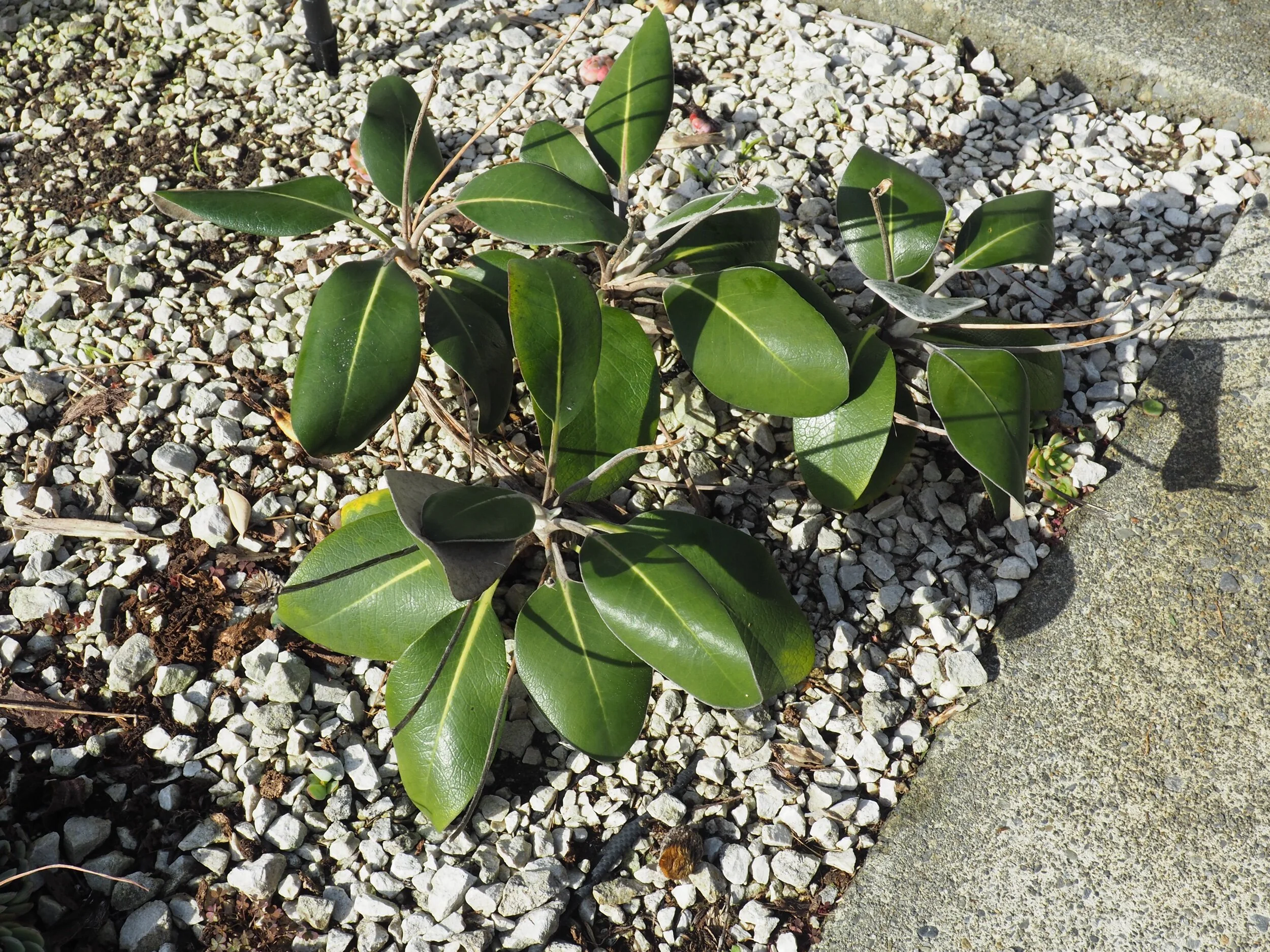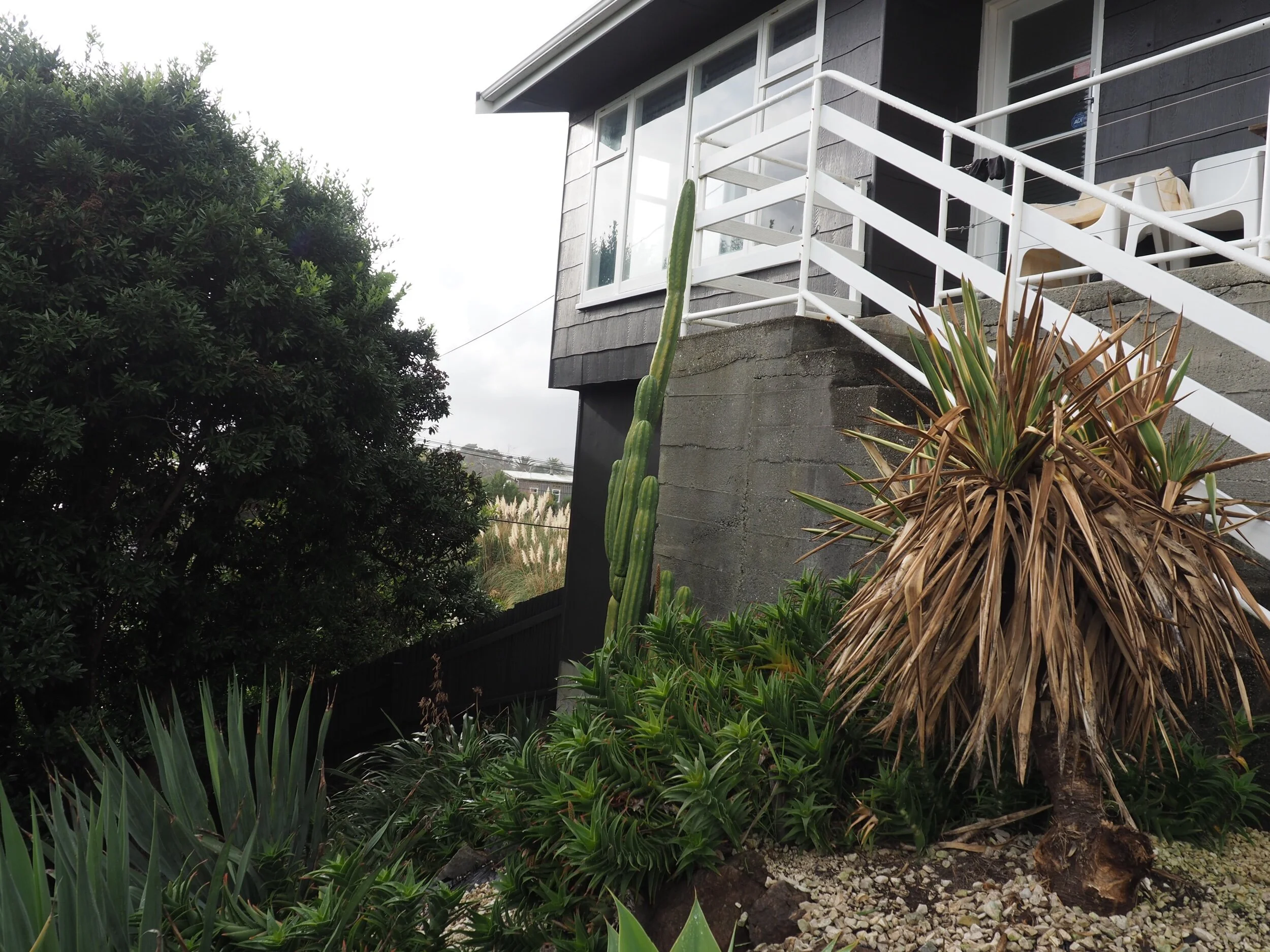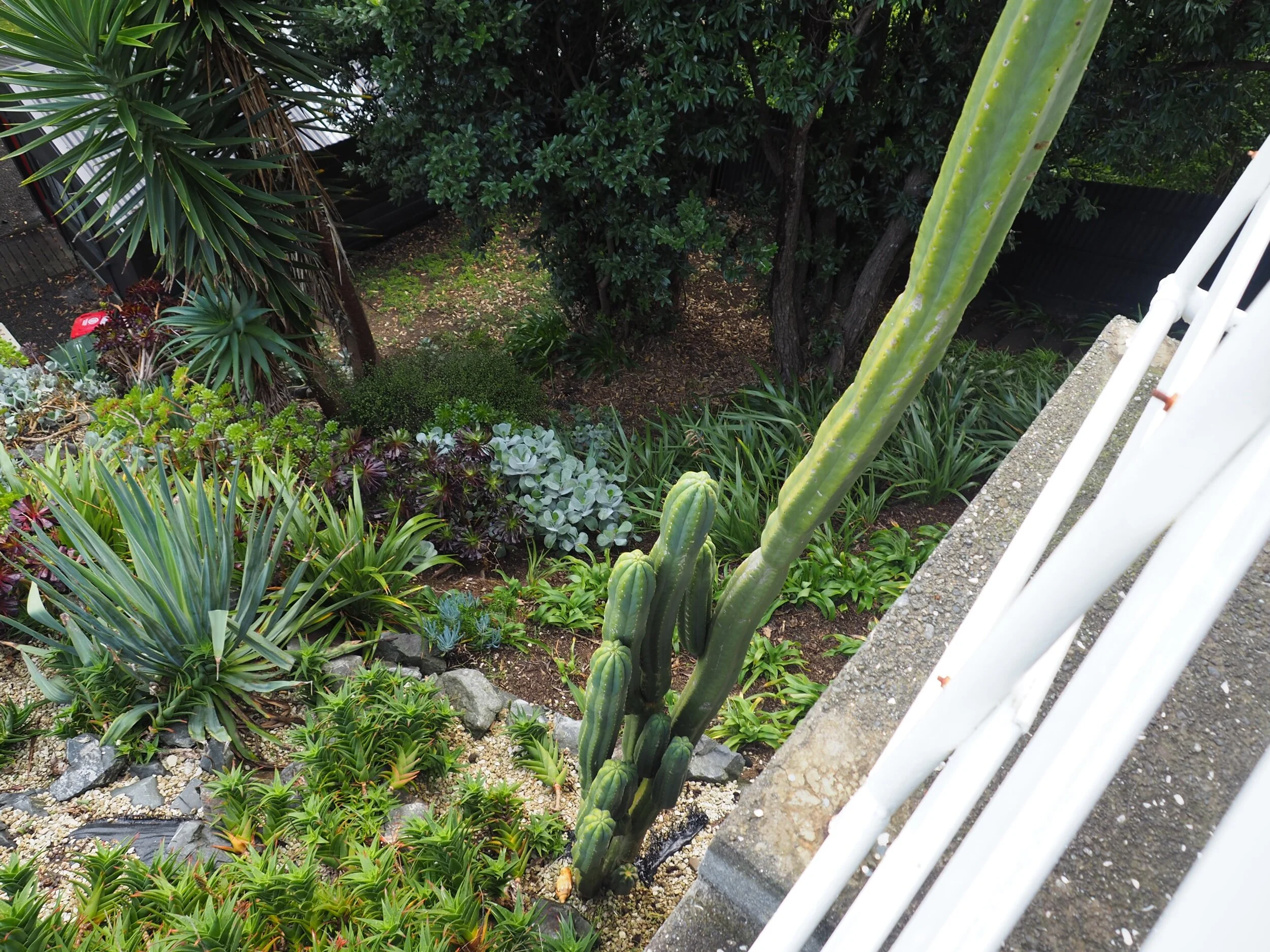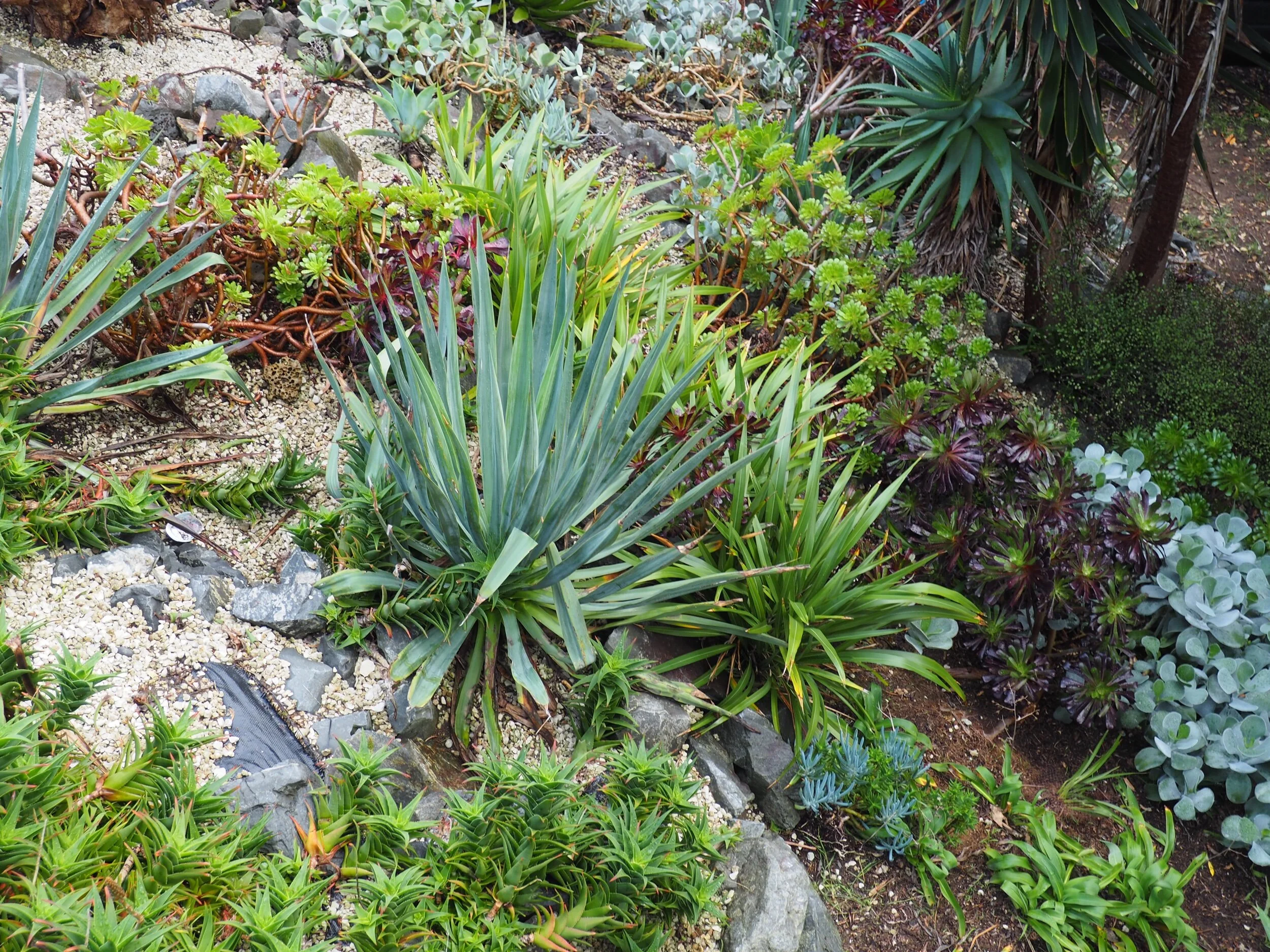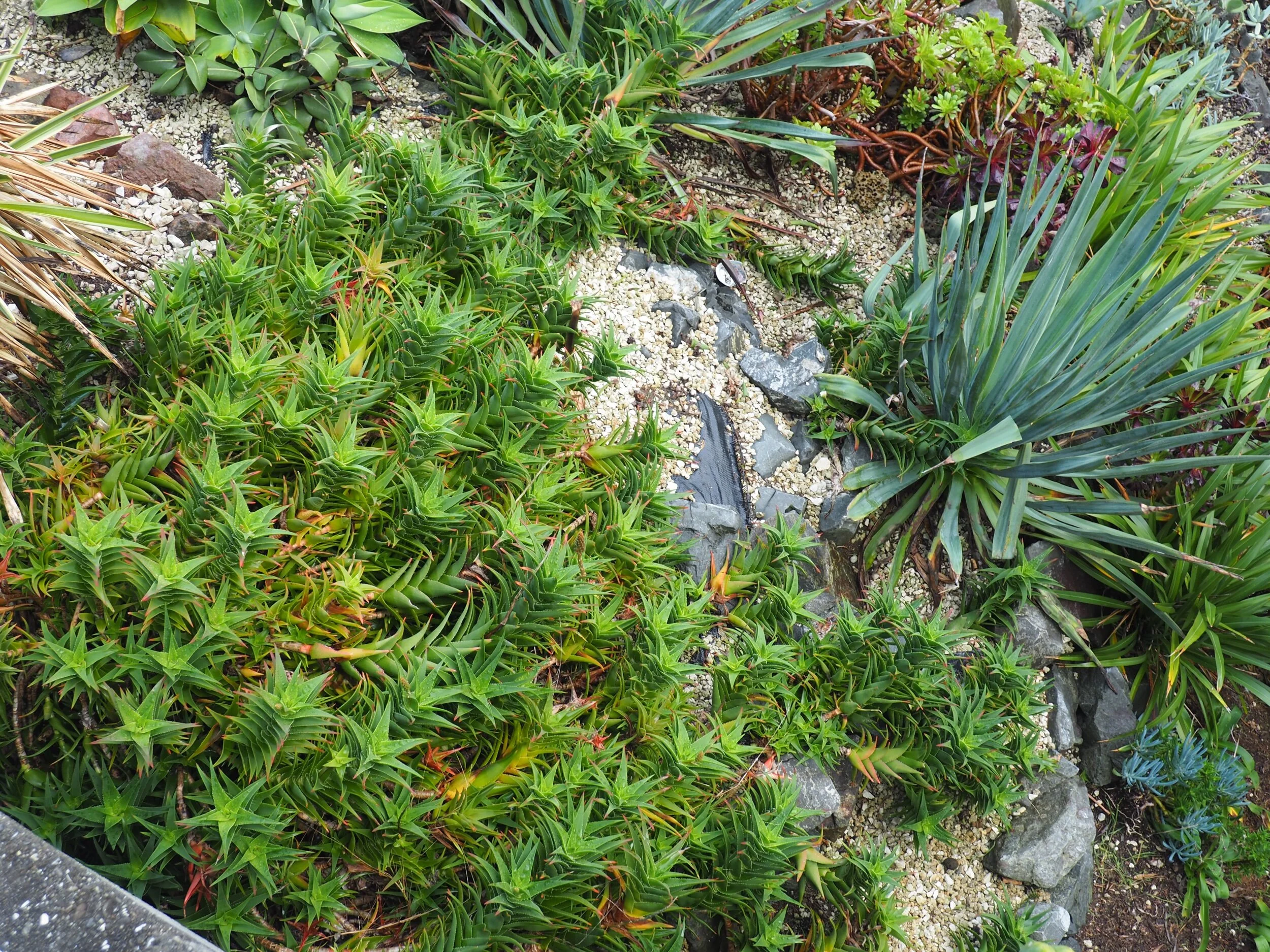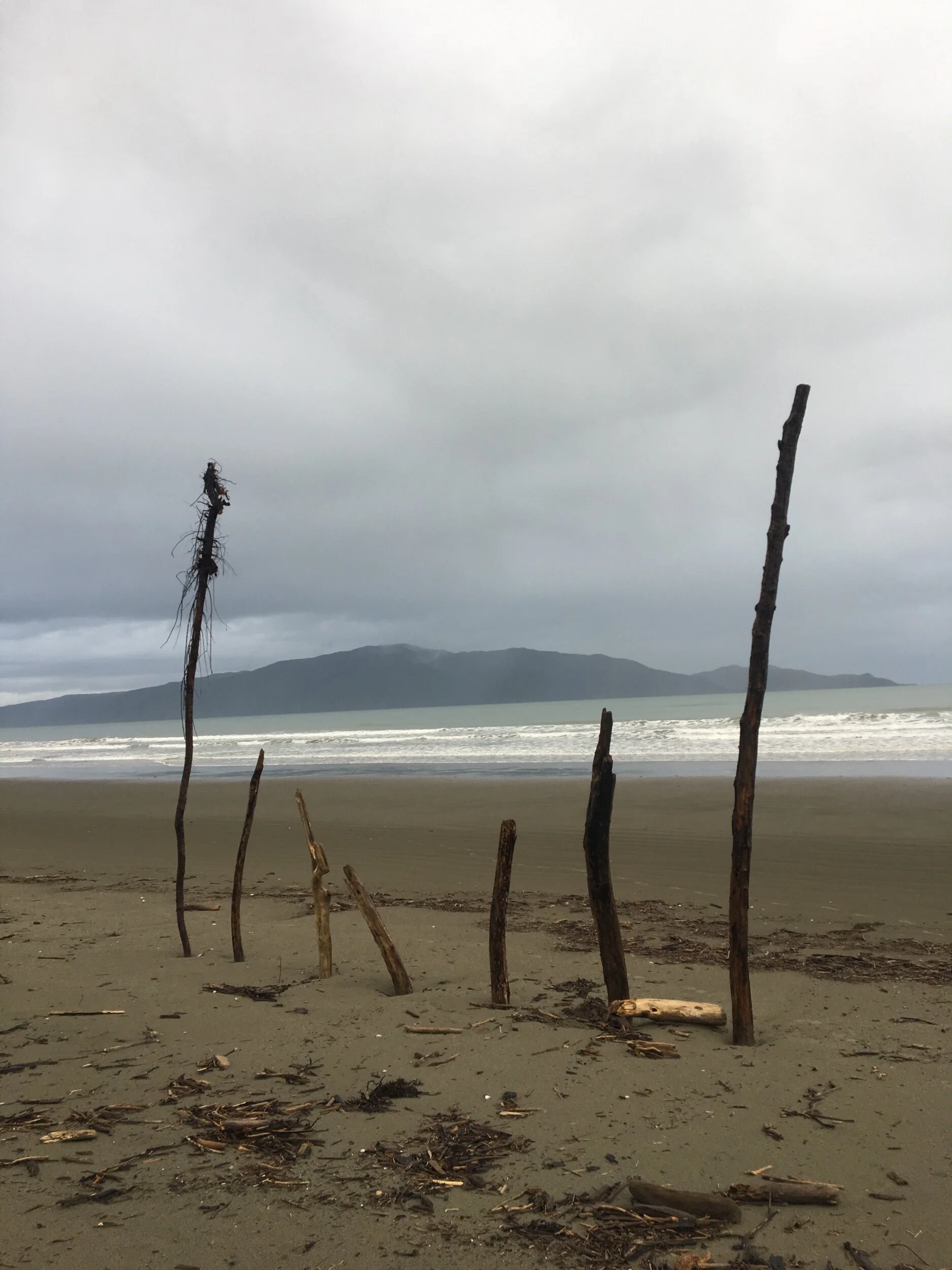Last week we had our first post-lockdown family holiday. We traveled 50 minutes north of Wellington to the seaside suburb of Waikanae where we rented a house for 5 nights.
I’m a sea person. Some people are lake people or snow people or river people but not me. I’m a sea person. I’m probably a meadow person too but more on that another time. Luckily in New Zealand you never have to drive more than a few hours to get to the sea. The seaside, that place where the land meets water is a wonderful place to be.
The house we rented had an incredible garden. Not only was it a case of right plants right place but it was a case of right garden right landscape. The person who made this garden was creative and practical. Maybe the owner of the house made the garden, maybe they hired someone to do it, maybe a friend offered to make it. Which ever way it came about it’s clear to me that the person or people who own this house love plants.
I’m reading a book I picked up second-hand a few years ago. It’s called ‘Plant-Driven Design - Creating Gardens That Honor Plants, Place and Spirit’ by Scott Ogden & Lauren Springer Ogden, 2008. This garden could easily fit in their book. I’m enjoying the book and agree with it’s premise. Plant-driven design is a simple idea. At its heart it’s about knowing and loving plants and understanding that plants aren’t static inanimate things but living changing beings.
Waikanae Beach.
Waikanae Beach.
Here’s the view of the garden from the deck of the house. It faces north-west and is 50 metres from the beach. Unsurprisingly the soil is sandy. Waikanae has a different climate to Wellington. It’s warmer and milder and more-or-less frost free. There are plants growing in this garden that I can’t grow in mine, like pukas and palms and a banana plant. I was impressed with the number of big trees and shrubs. I was impressed there was a garden at all. Most beachside properties, especially holiday houses, are devoid of anything that blocks the sun or requires maintainence. In my experience grass and concrete is what constitutes a garden, with maybe a neglected shrub or two. The garden to the left of this one (photo below) is a good example.
The big trees in the photo above are pohutakawa trees, Metrosideros excelsa. The medium sized tree with spiky leaves in the middle is a dragon tree, Dracaena draco (at least I think it is - then again it could be Aloe dichotoma). The other tree with the spiky leaves on the right is a mountain cabbage tree, Cordyline indivisia. This a garden that celebrates foliage, and what a diversity of foliage there is - from native plants like the puka, Meryta sincairii, with its big luscious leaves, to exotics like the Aeonium with its petal-like leaves.
I was struck by the opulence of this terraced garden. The luminosity of the leaves, the jewel-like colours: lime greens, jade greens, oyster whites, ruby reds and fiery oranges. It’s bright and explosive and dynamic. There’s such a variety of textures and shapes from swords to rosettes to teardrops to torches. It shimmers, it glows, it illuminates. Walking up the hillside was like walking through a Seussian landscape of plants sculptured out of rubber and wax. There are trees with leaves like starfish and leaves on shrubs like fans of fat fingers. There are plants with leaves like green flames of fire and others like strange twisted lollipops.
The garden has several different sections, but it’s this hillside one I’m going to look at. It consists of a series of terraces, stretching from the bottom of the hill up to the house. A concrete zig-zag path runs up one side of it. The terraces have been constructed out of low stone walls. Weed-matting has been laid down and cut in parts to enable the planting of the plants into the soil under it. A mulch of limestone chips covers the weed-matting. Driftwood and rocks have been placed beside the path in key places to stop the limestone chips from falling onto it. It is a kind of rockery. Rocks are structural, rocks are weed suppressors rocks are ornamental.
This blog is short on words but big on pictures. I’ll take some time out to look at a handful of plants. This garden has got me thinking about my own rockery (or brickery) - more of that in my next blog.
Let’s walk from the bottom of the garden to the top.
The orange flowering succulent above is Aloe aborescens and as you can see it flowers in winter. I’ve seen a few around Wellington so they must be more cold tolerant than they look.
Here’s another succulent that flowers in winter, the jade plant, Crassula argentea (above)
Here’s a puka, Meryta sinclairii. It’s frost tender, especially when it’s small. According to Fiona Eadie, ‘100 best native plants for New Zealand gardens’, it can cope with frosts once it gets to 2m in height. Maybe I could grow one in my courtyard. I could cover it in frost cloth for a few years. Luckily it doesn’t mind the wind.
Let’s assume this tree is a dragon tree, Dracaena draco. It comes from the Canary Islands and belongs to the asparagus family. It’s slow growing and very drought tolerant.
I love Aeoniums. I have these two Aeonium arboreums in my garden, a green one and a red-green one. Many flower in spring, though my green one flowers in winter. They grow very easily from cuttings.
The plant with the big jade green leaves above and below is Agave attenuata. I have 2 varieties at home, the green one and a variegated one. My friend Ali got me into this great plant. She gave me one of hers. They’re very easy to grow and are happy in full sun and light shade. It is a frost tender plant but I’ve found my one, which is in a sheltered spot, survives better than some of my other tender plants. Agave leaves look sharp and spiky but they’re quite the opposite, very soft and springy.
This is the Malborough rock daisy, Pachystegia insignis. This plant loves dry sunny positions. It flowers in spring.
I have this tall cactus at home, though my one is only half a metre high. It was given to me by my cousin. It was given to my cousin by our nana. I think it’s called a San Pedro cactus from the Trichocereus family.
Well here we are, back at the beginning or the beginning of the end or the end of the beginning. Whatever it is, here we are.
This blog is dedicated to my friend Sophie and her mum. Her mum died last week. Sophie managed to fly back to France a couple of weeks ago. It’s a complicated process flying from New Zealand to France during a pandemic.
I remember meeting Sophie’s mum many years ago. Her mum was visiting from France. Sophie and her family rented a holiday house at Otaki Beach. The back gate opened right onto the sand dunes. Otaki Beach is north of Waikanae Beach. It’s part of the same coastline. It has the same off-white sand and cold blue sea. If you look hard enough and long enough you might even see Australia.
We had a BBQ lunch, we drank wine, and then we walked on the beach. It was overcast, the tide was out. We walked for miles and the sand never ran out. The kids found a sandhill and we left them to slide down it again and again. We kept on walking. Sophie and her mum loved the beach. I think it reminded them of a place they’d lived or visited many years ago. Sophie’s mum was happy.
I can’t remember what we talked about. It was that easy conversation, the kind with long pauses as you gaze wistfully at the horizon or down at the sand. The sea washed over our feet and made the sand silvery. We collected shells. We walked to the part of the beach that was wild and scattered with the trunks and branches of fallen trees. The wood of the trees was worn down by the sea and the waves and the sun. It was worn as smooth and as silvery as the wet sand. It felt like we’d been walking for days and it was a good feeling. Finally we turned around and headed back.
Waikanae Beach.
